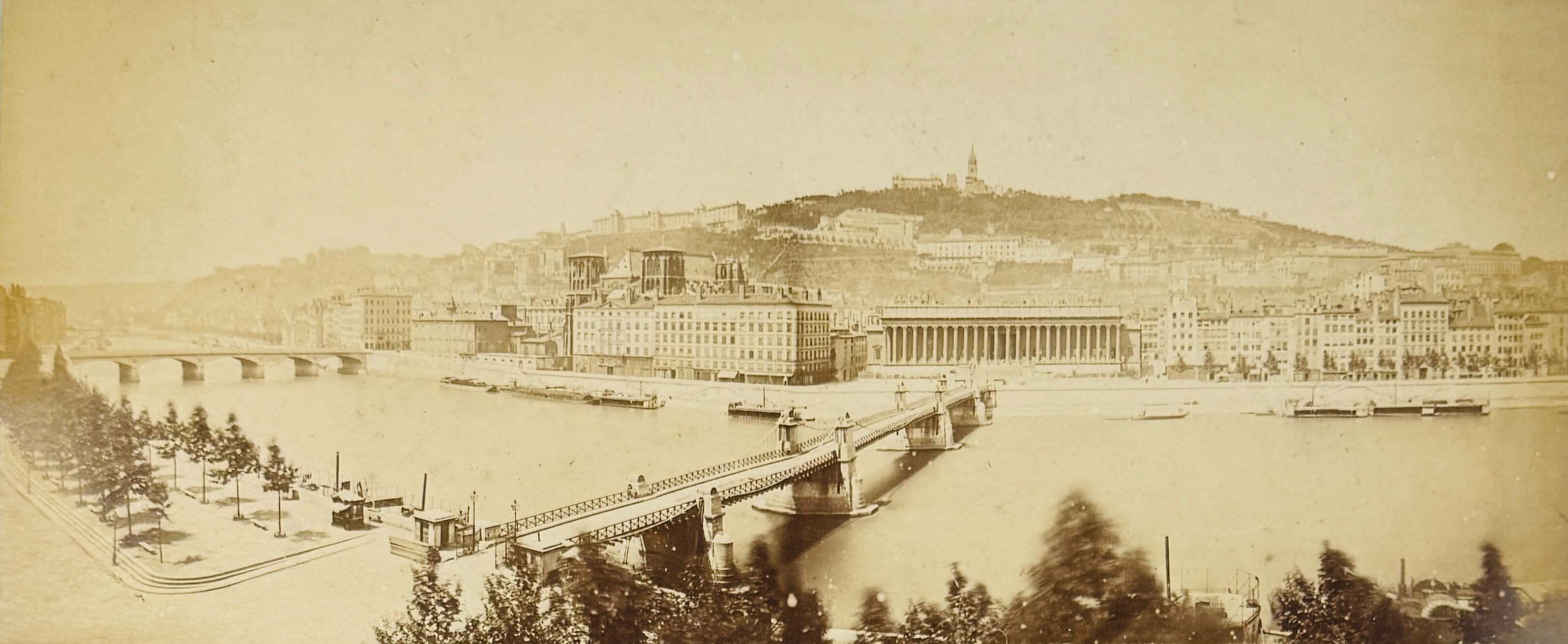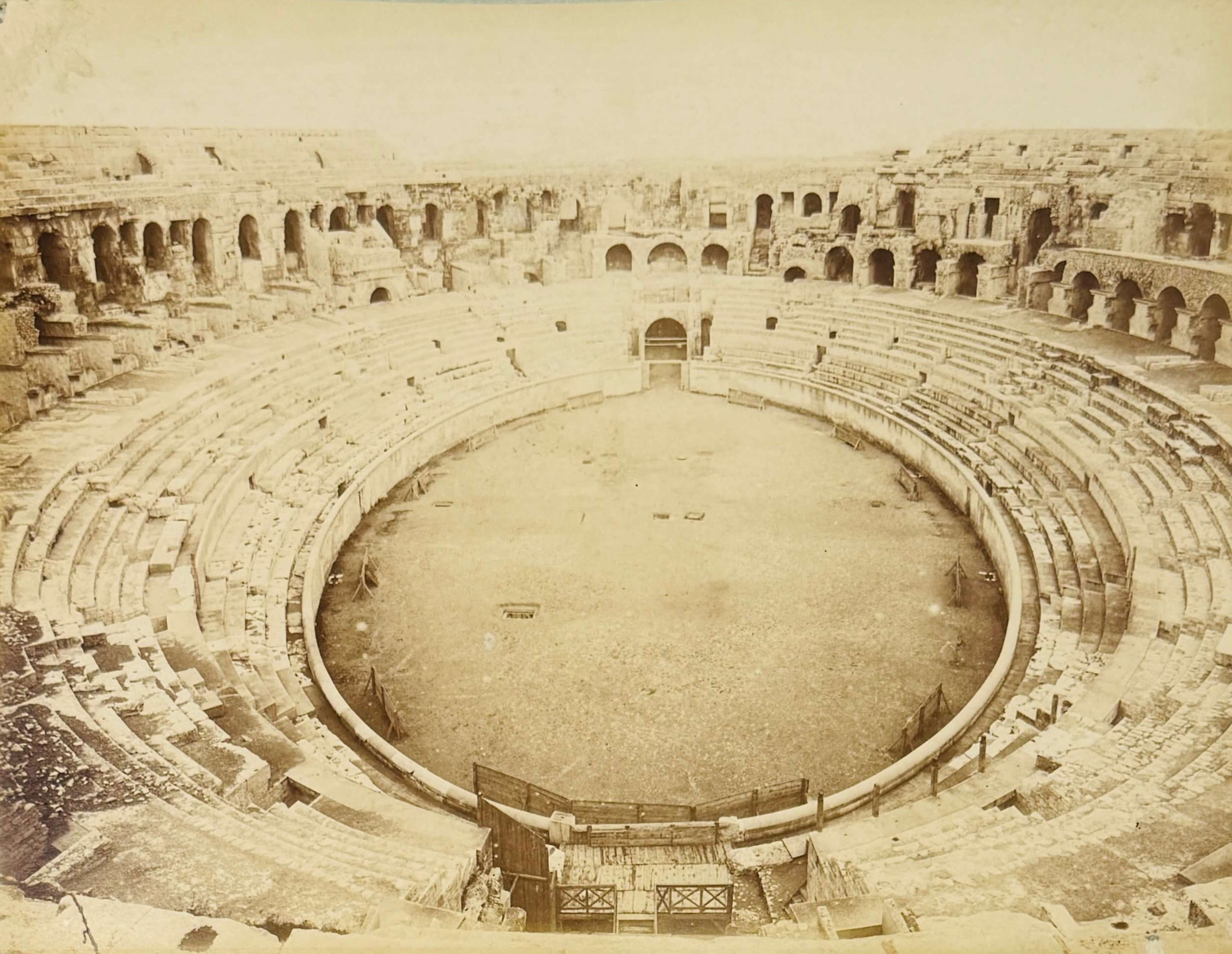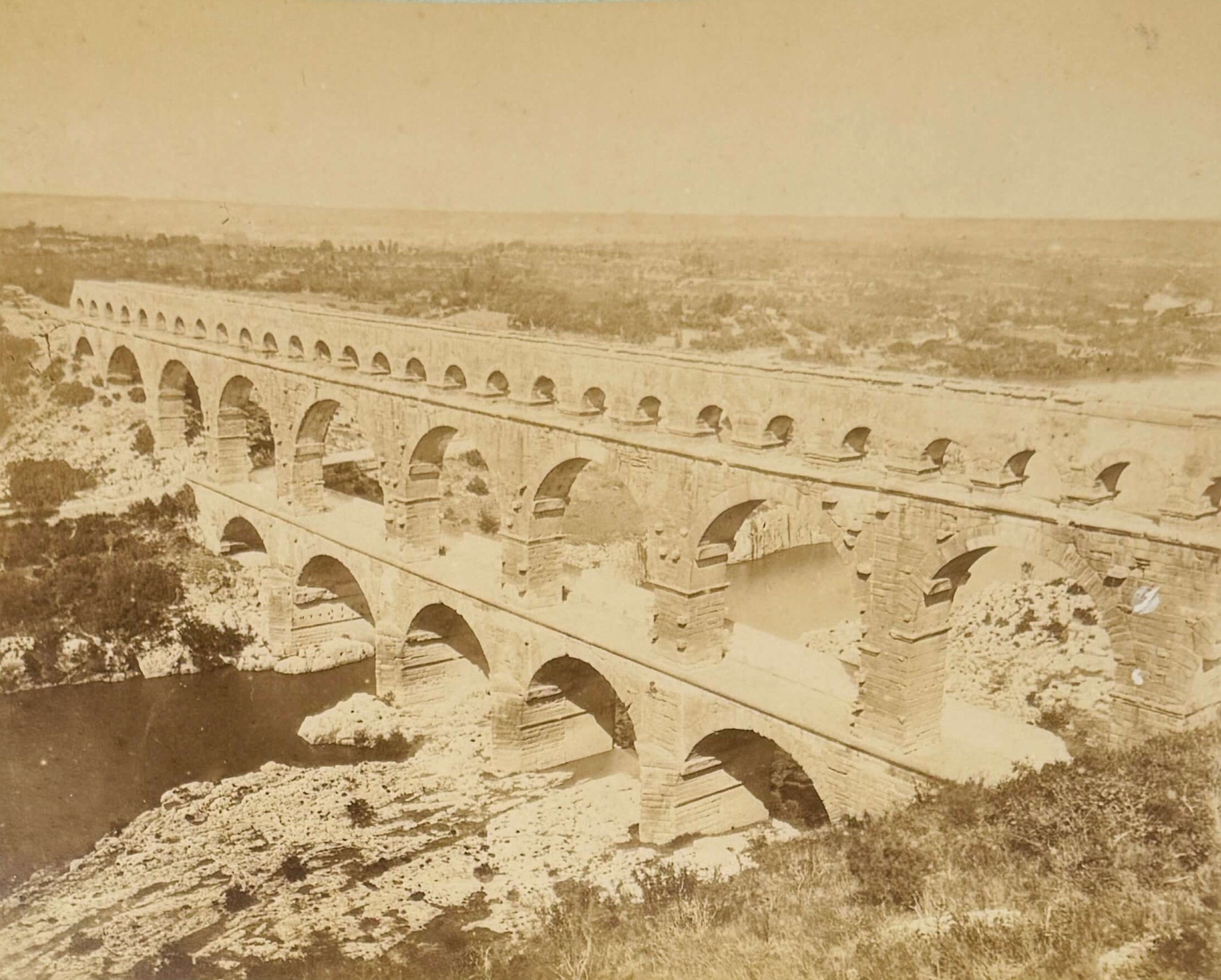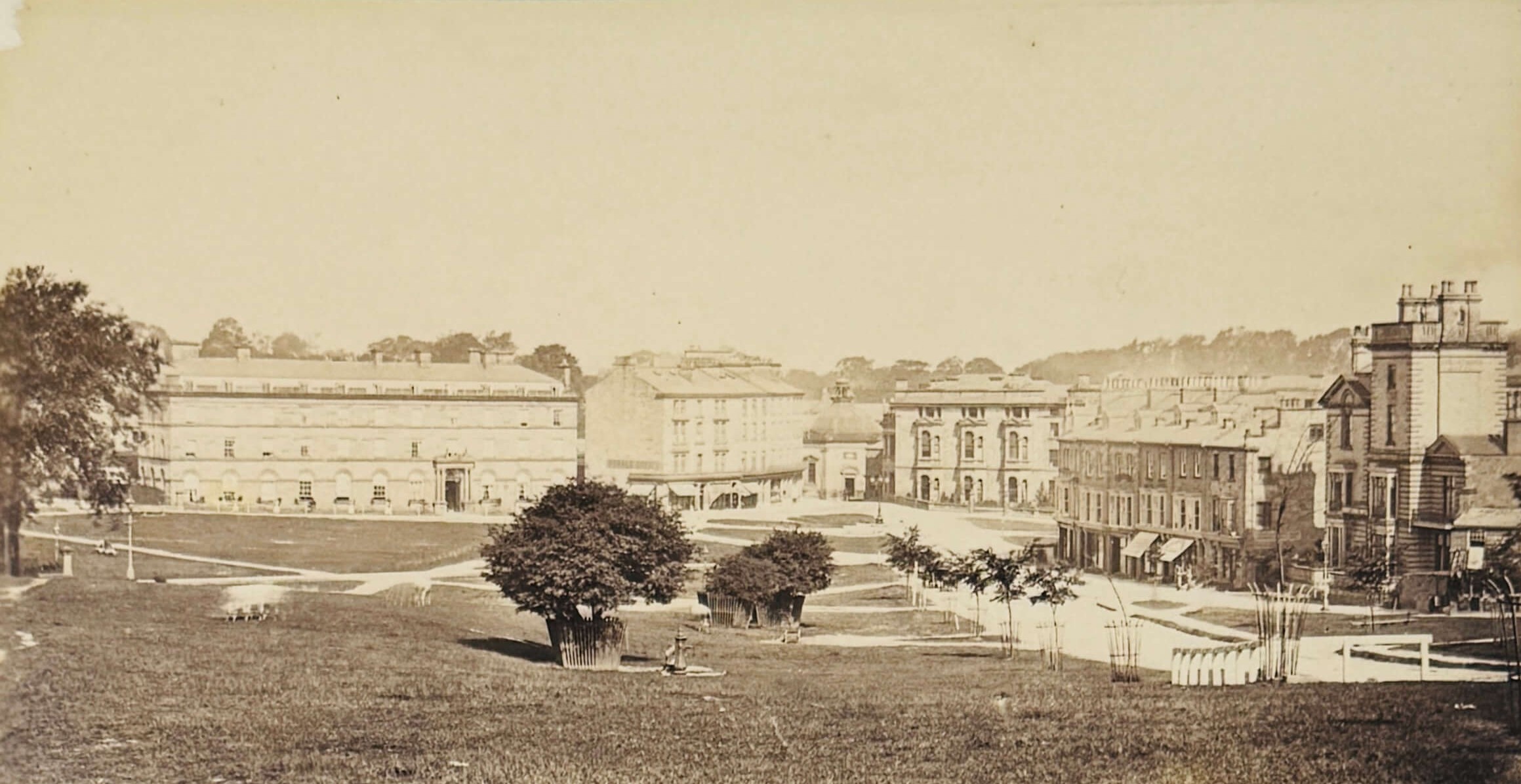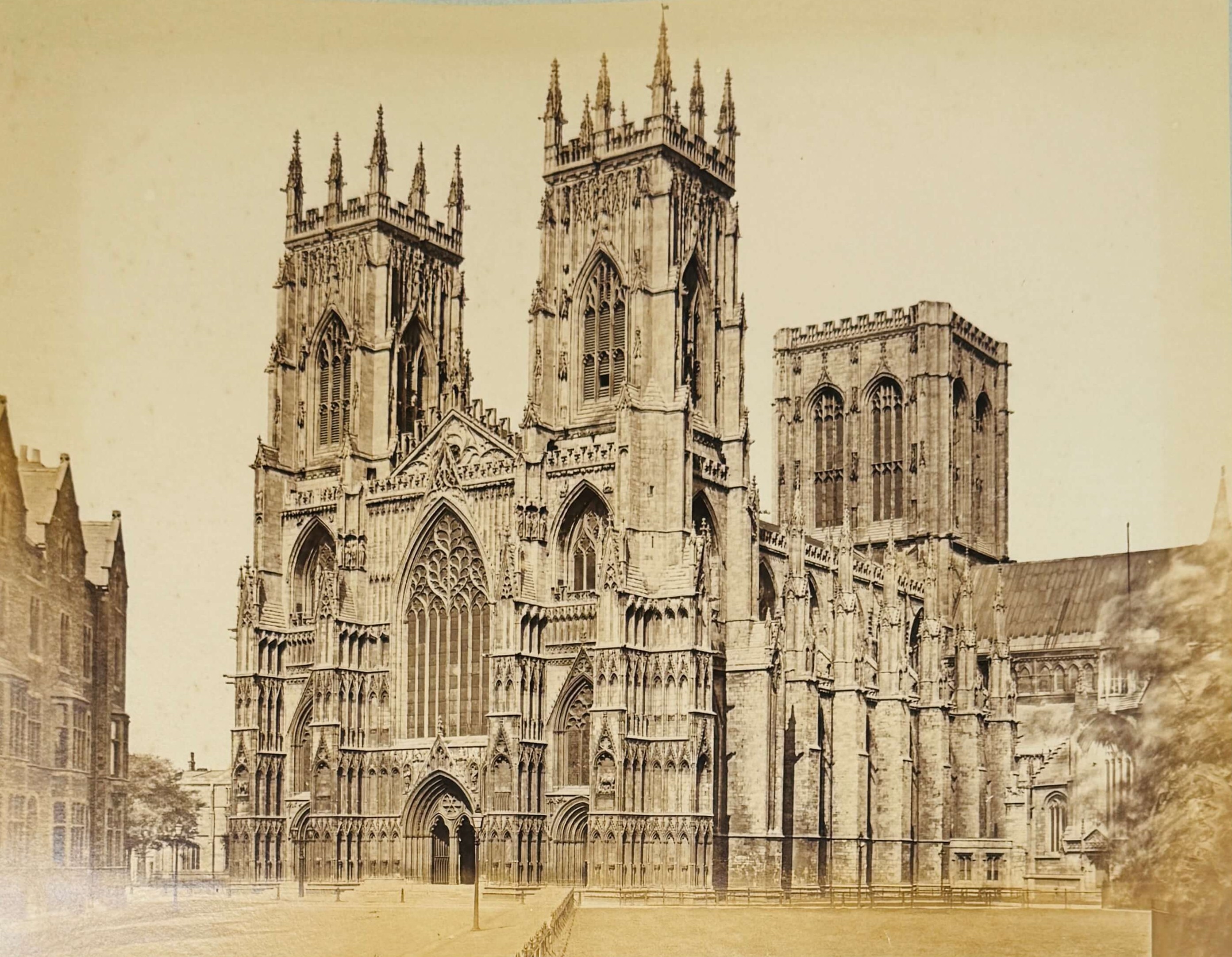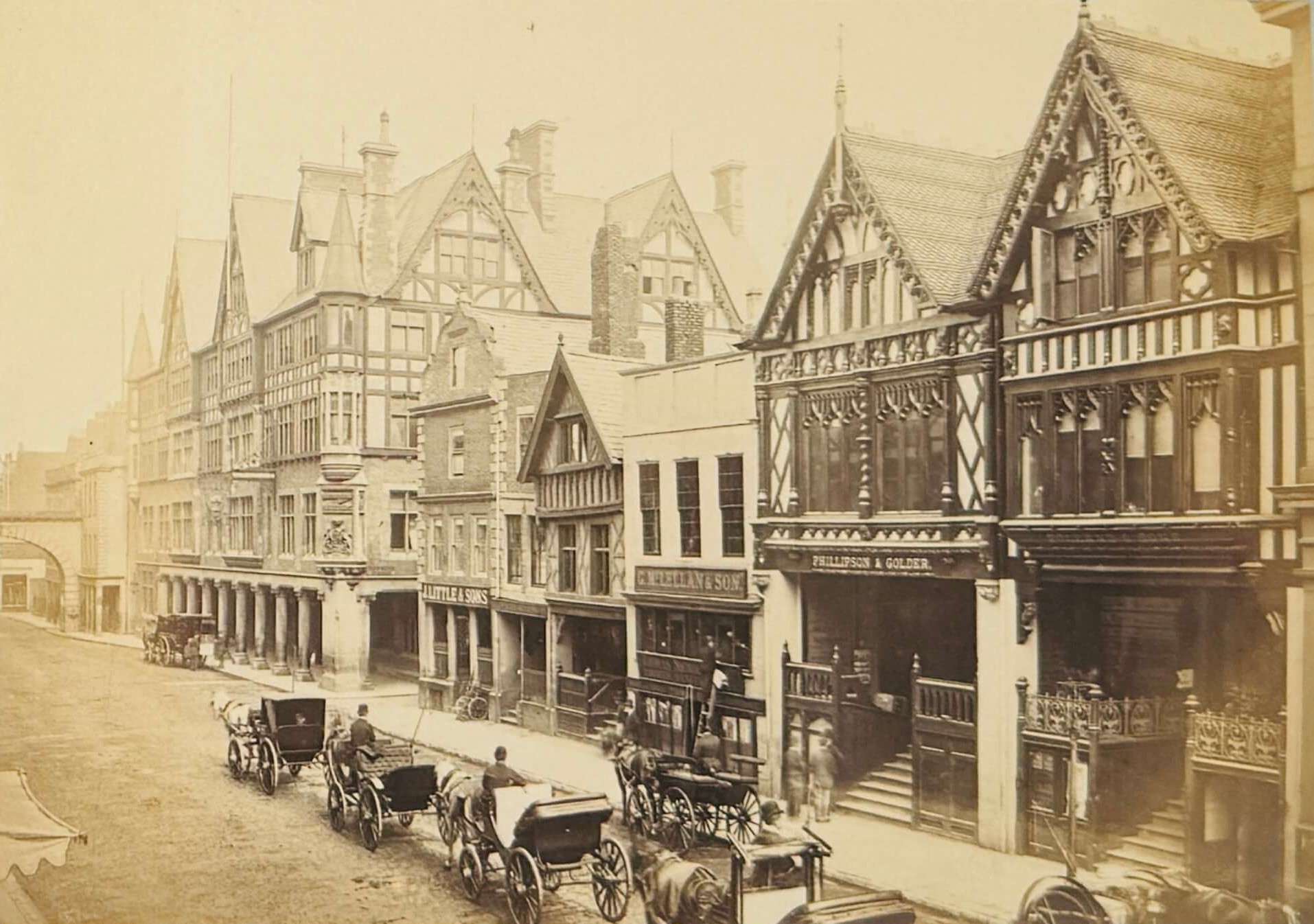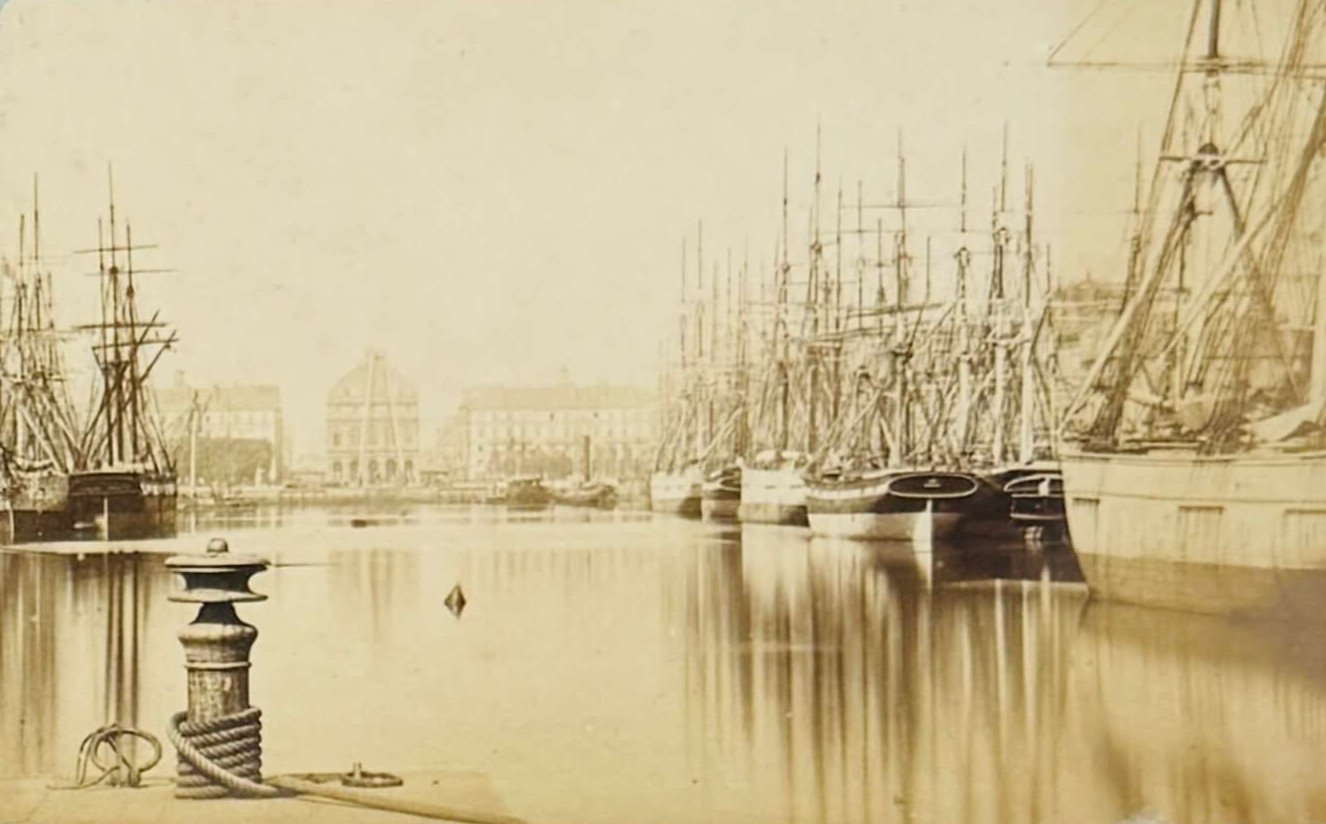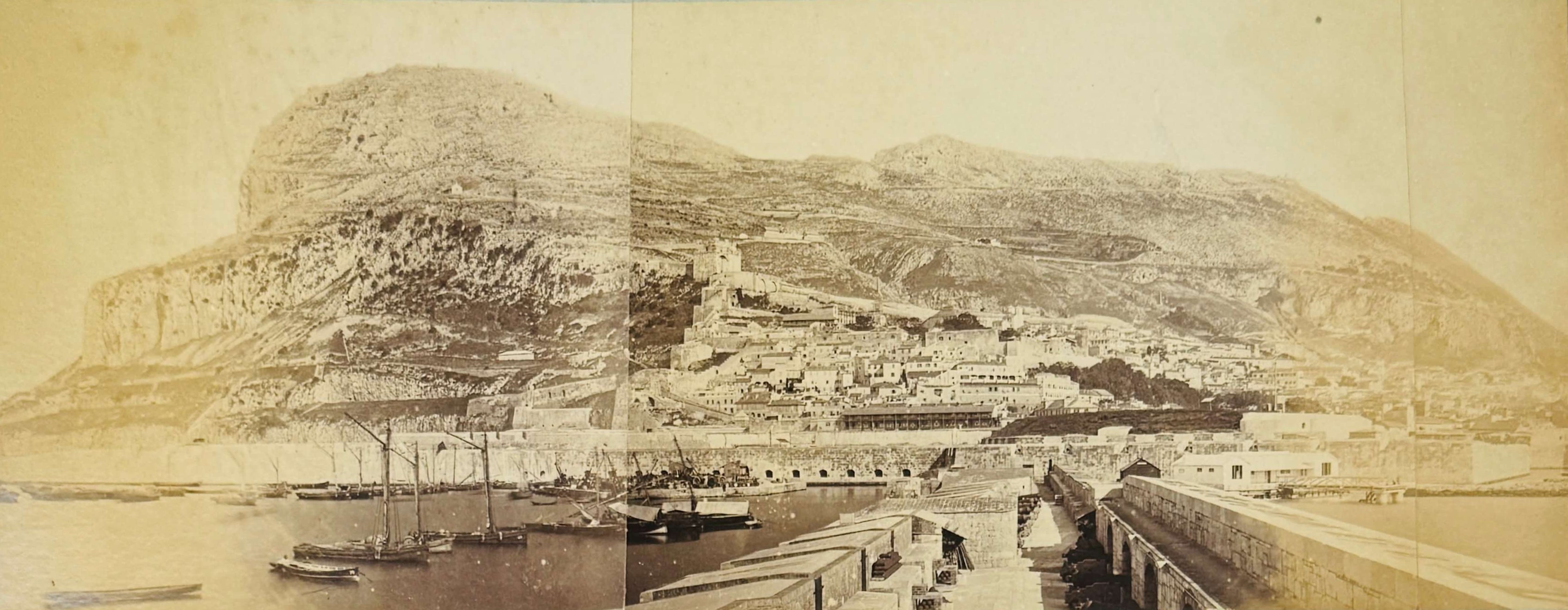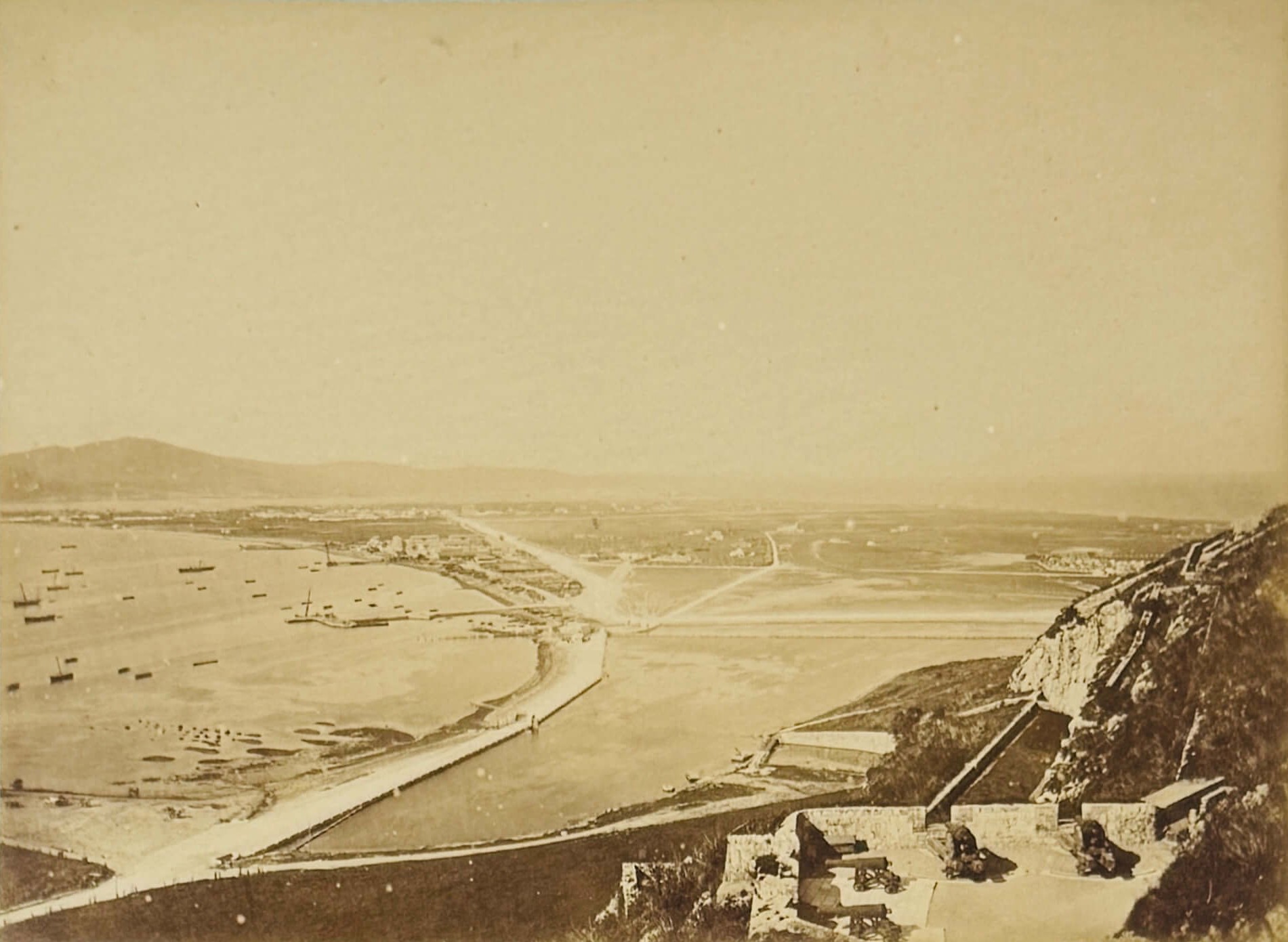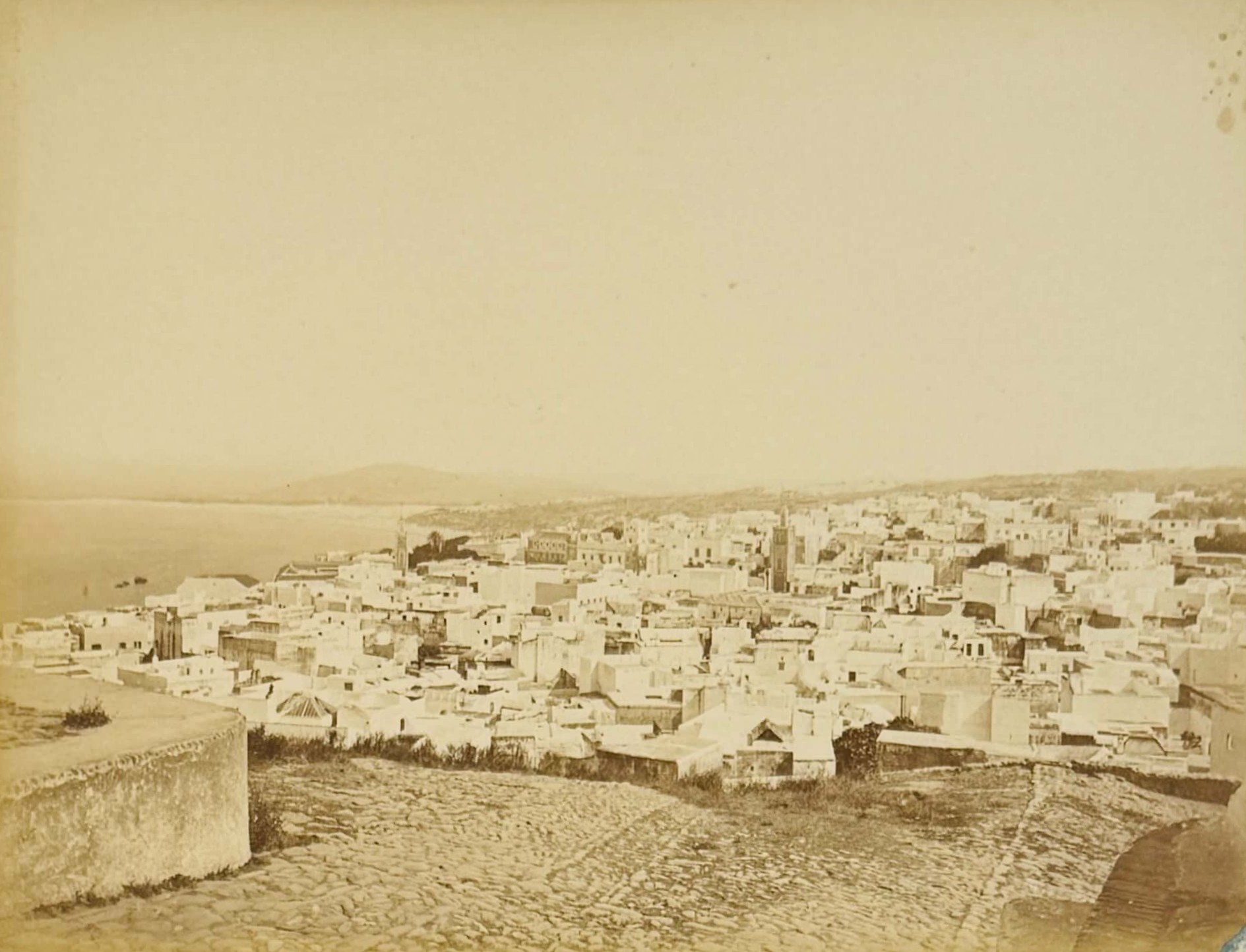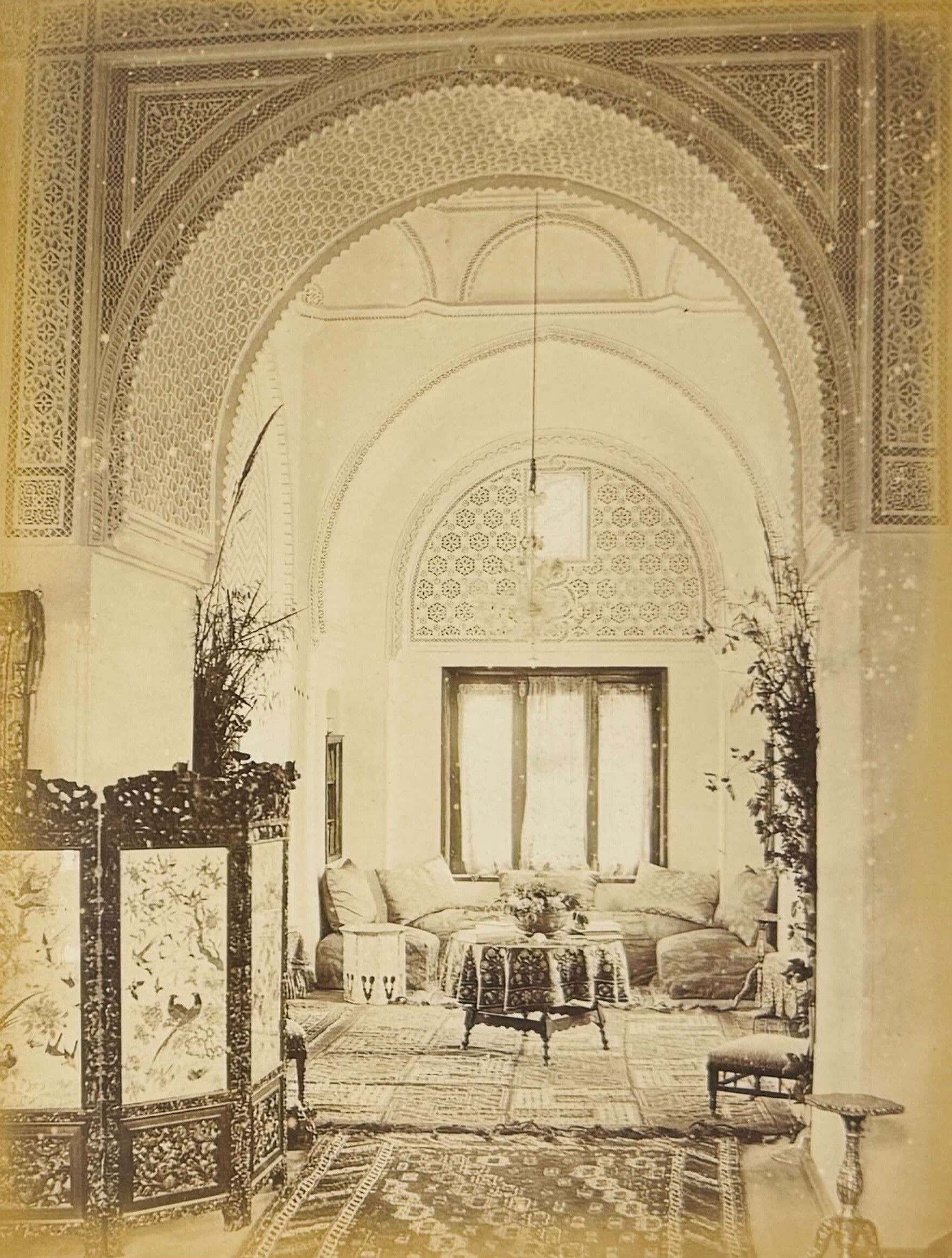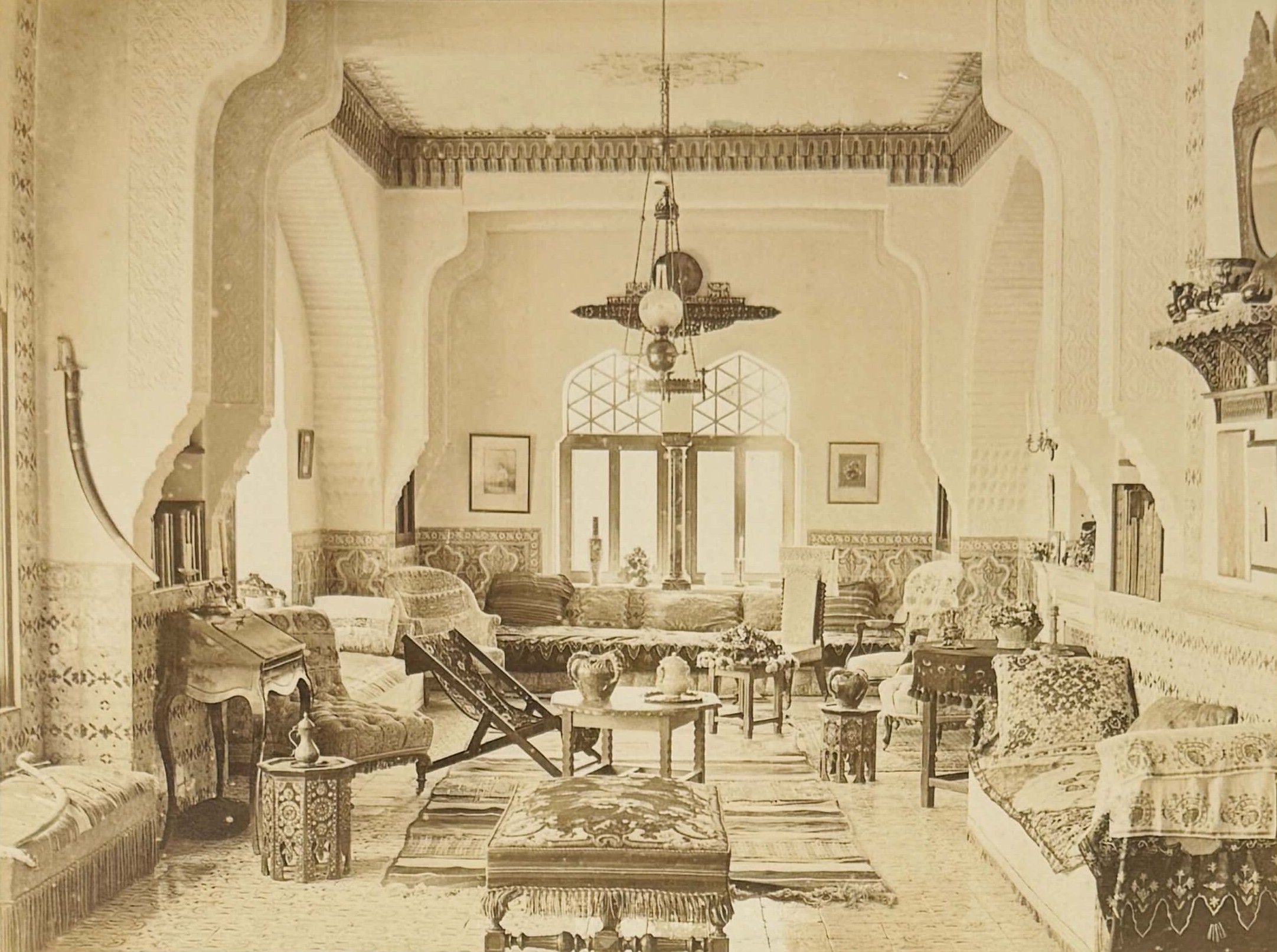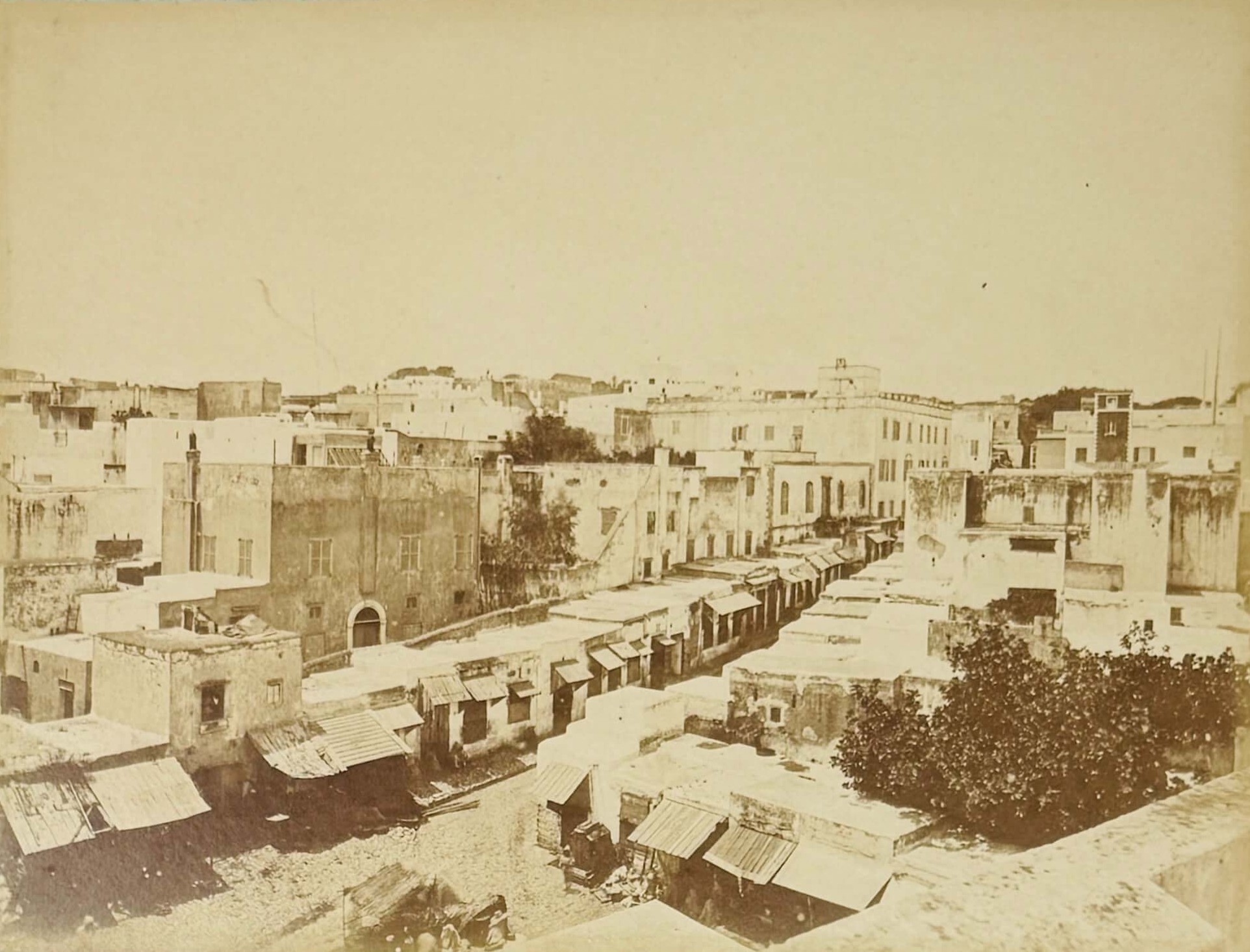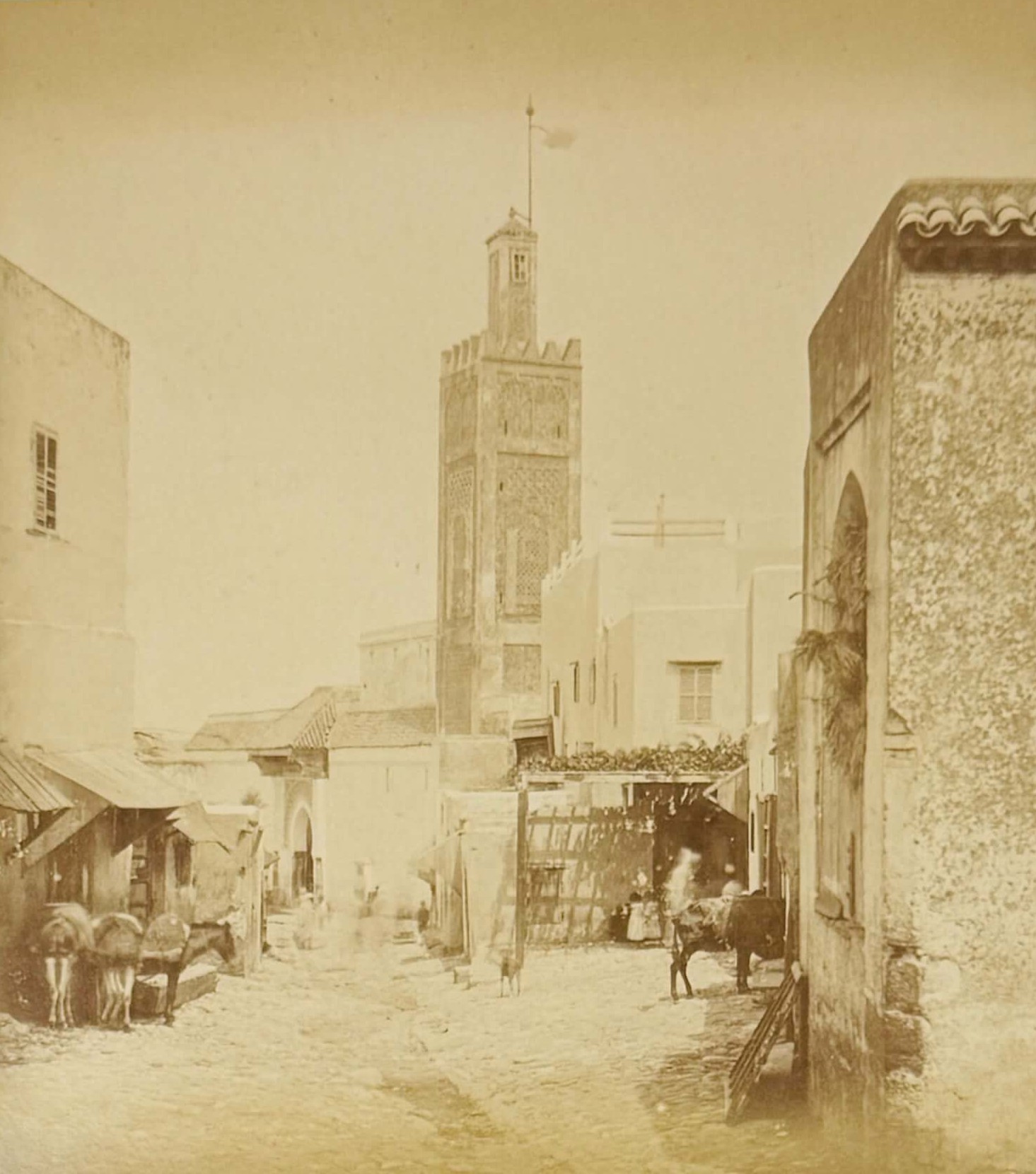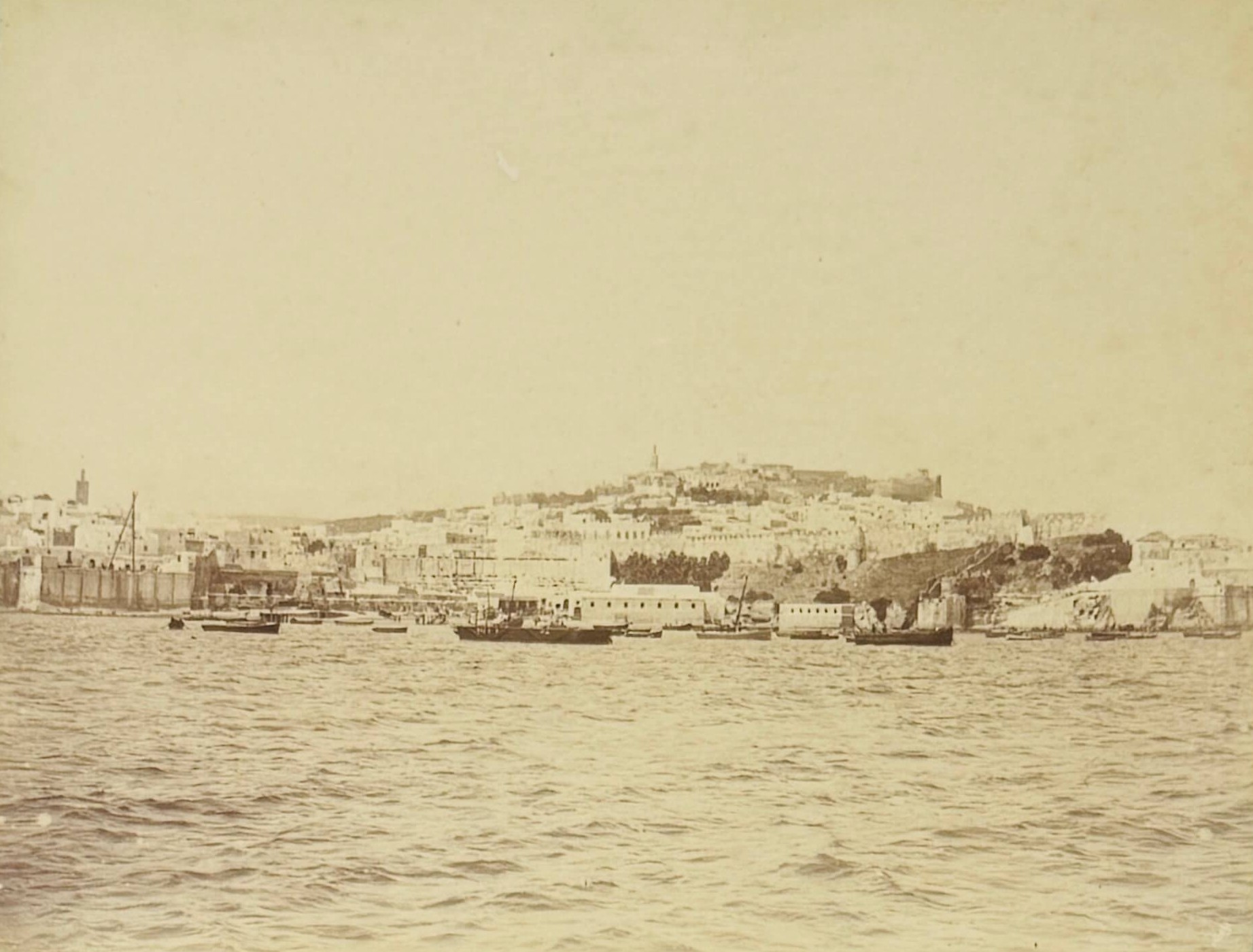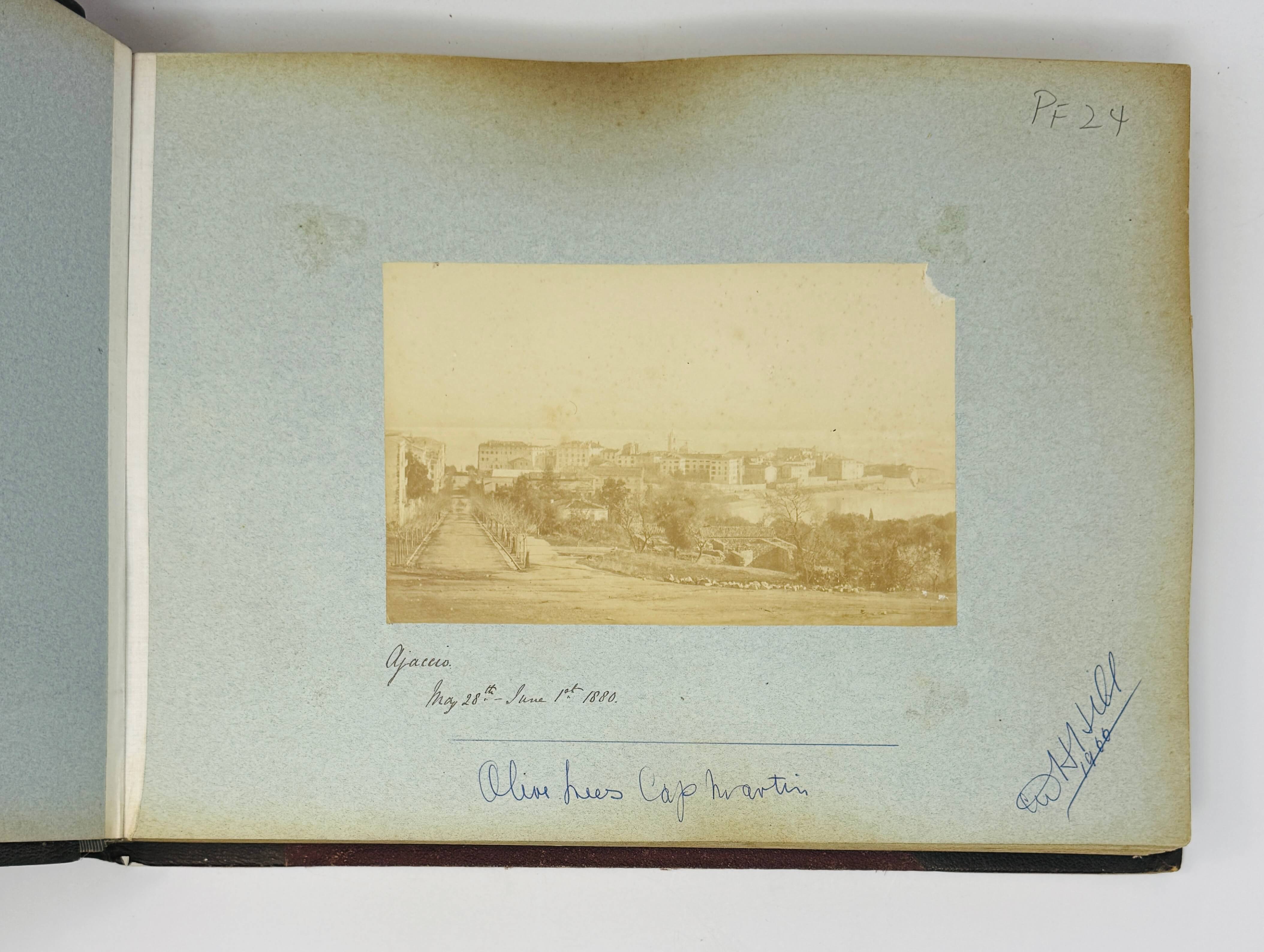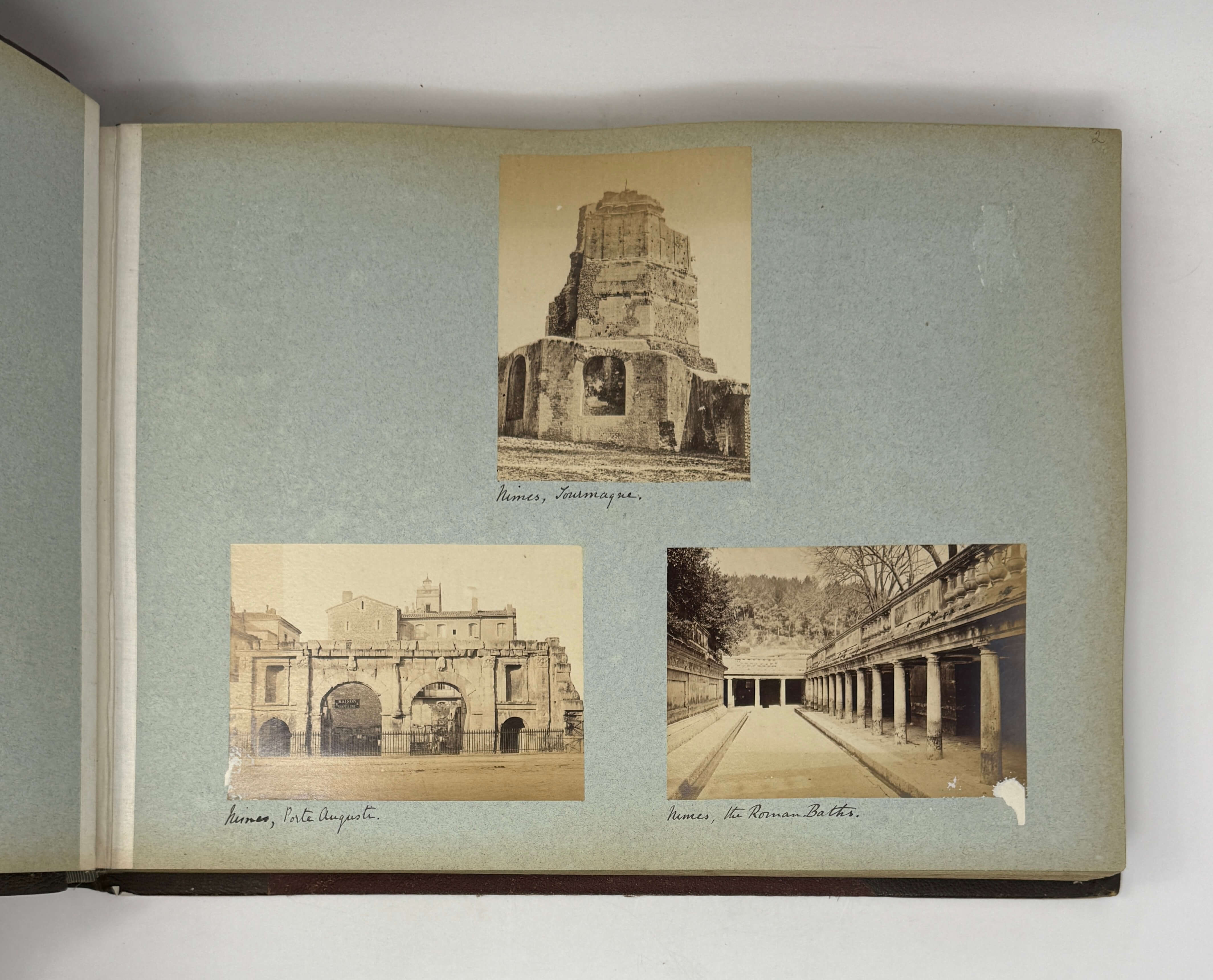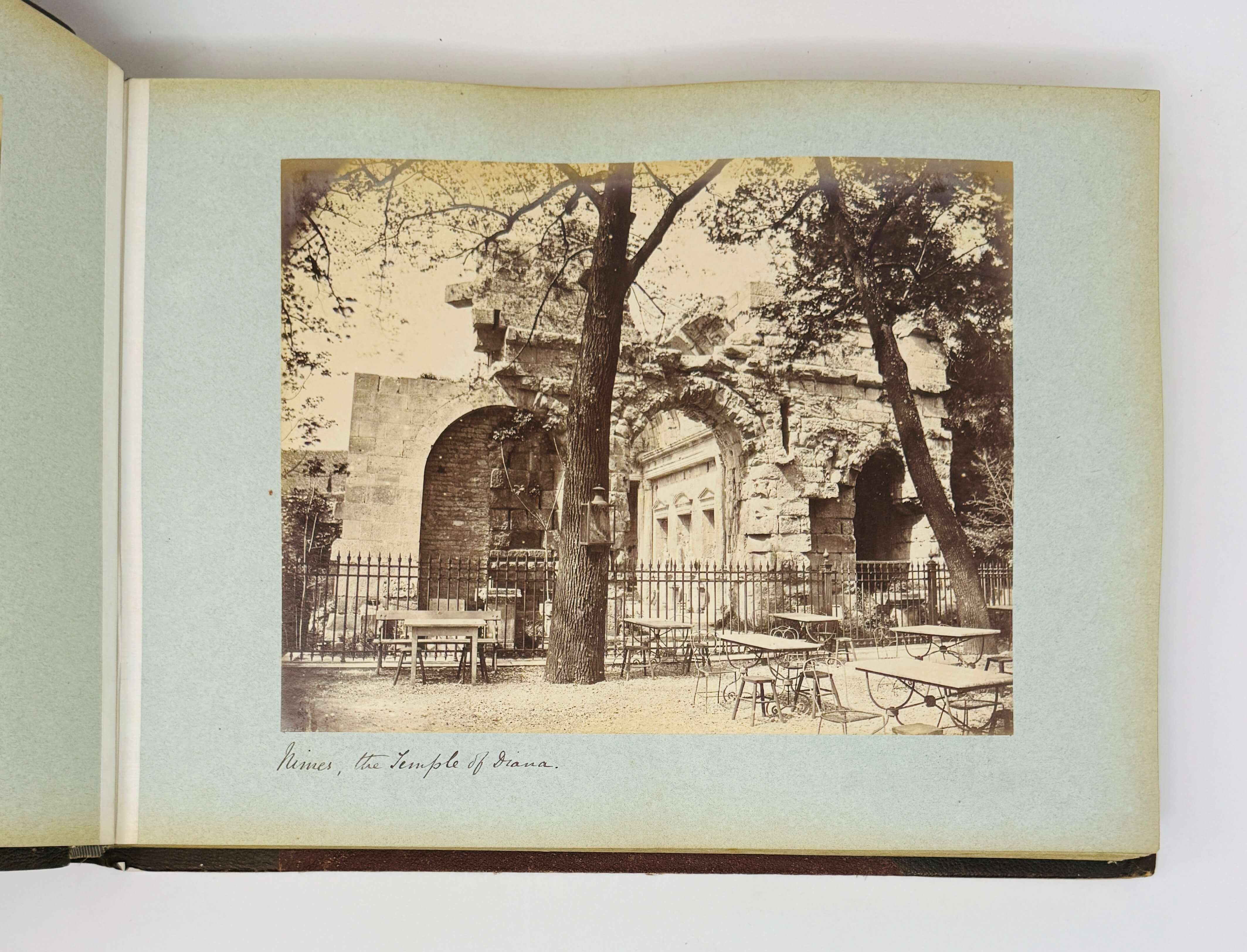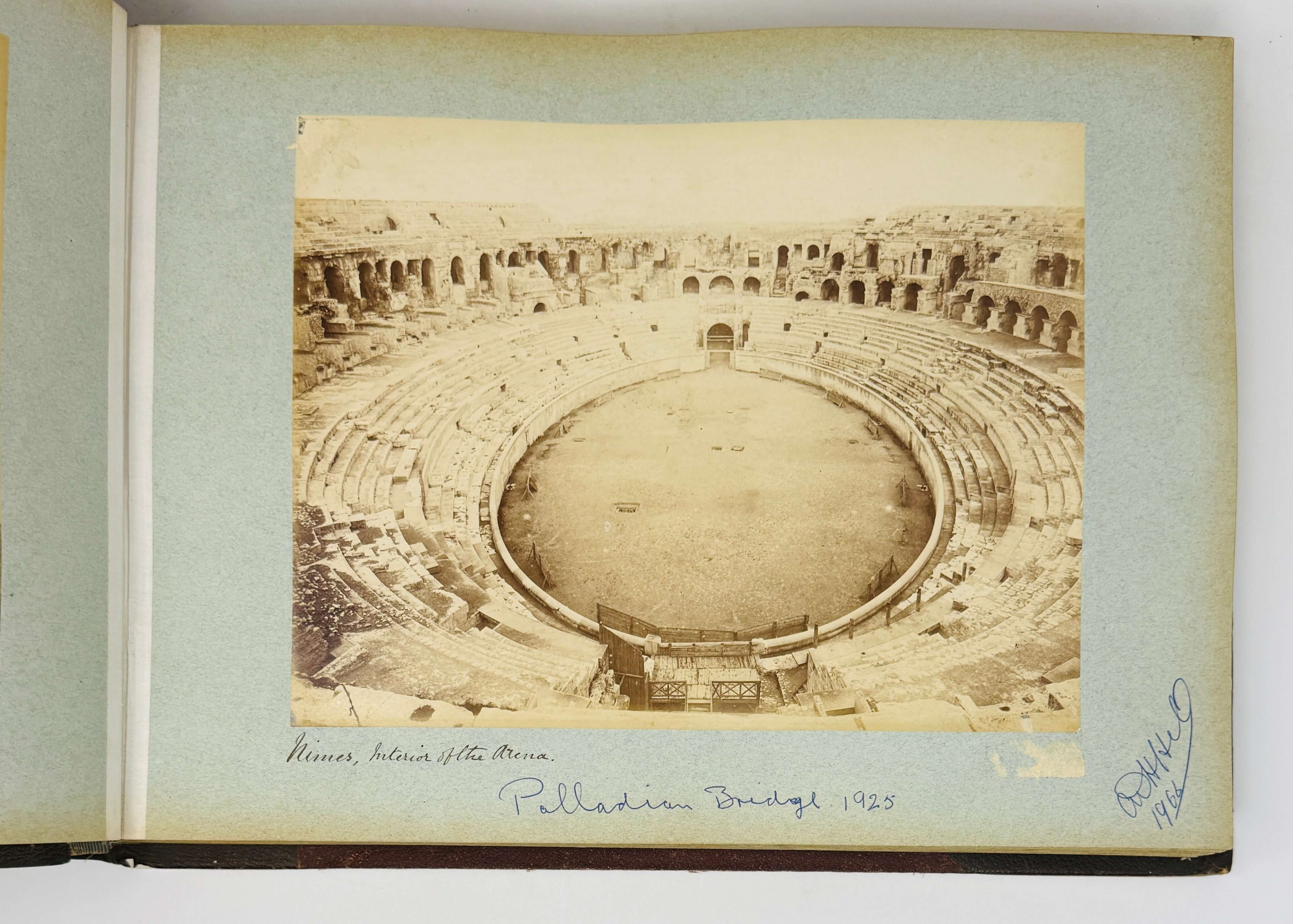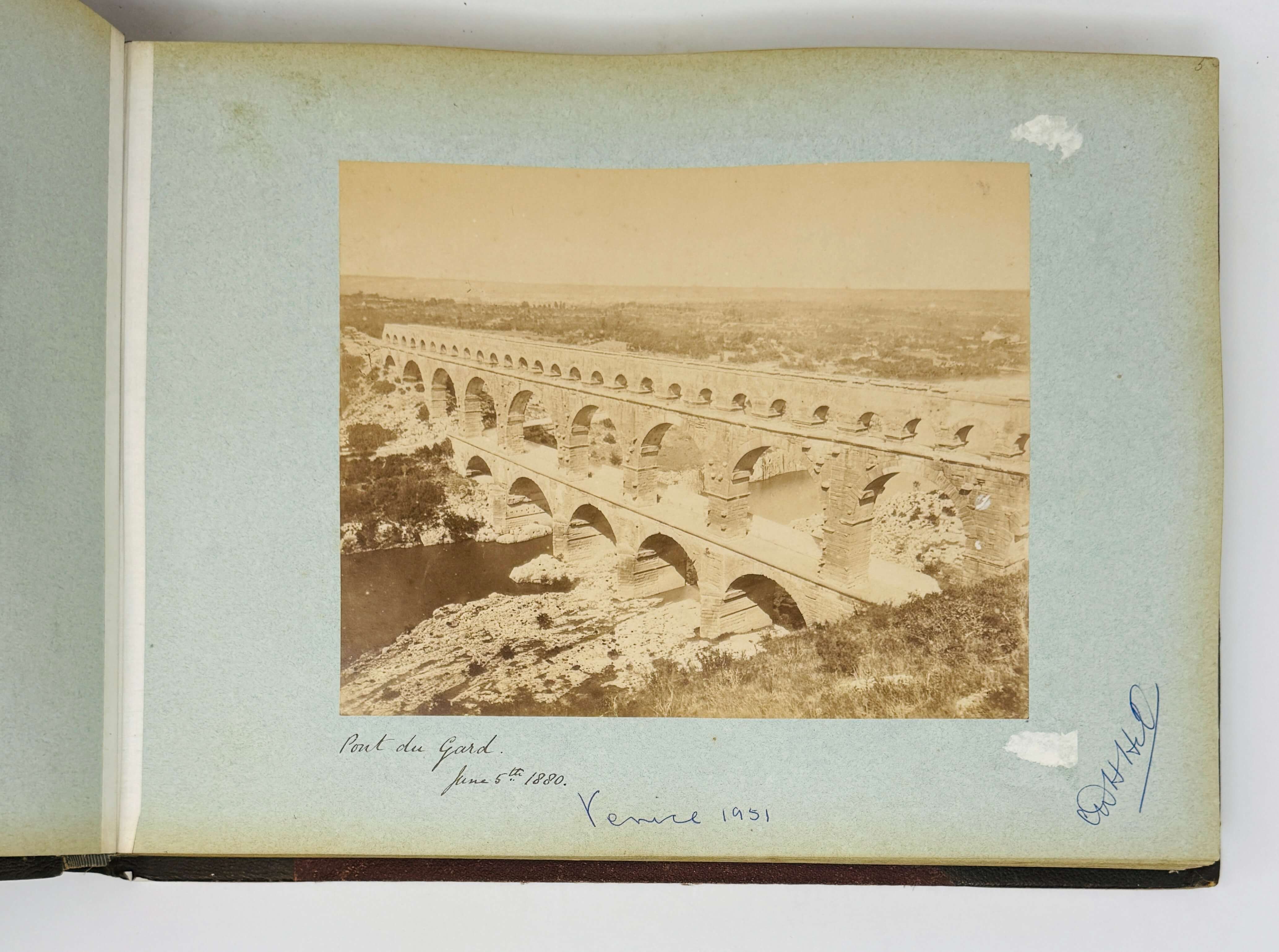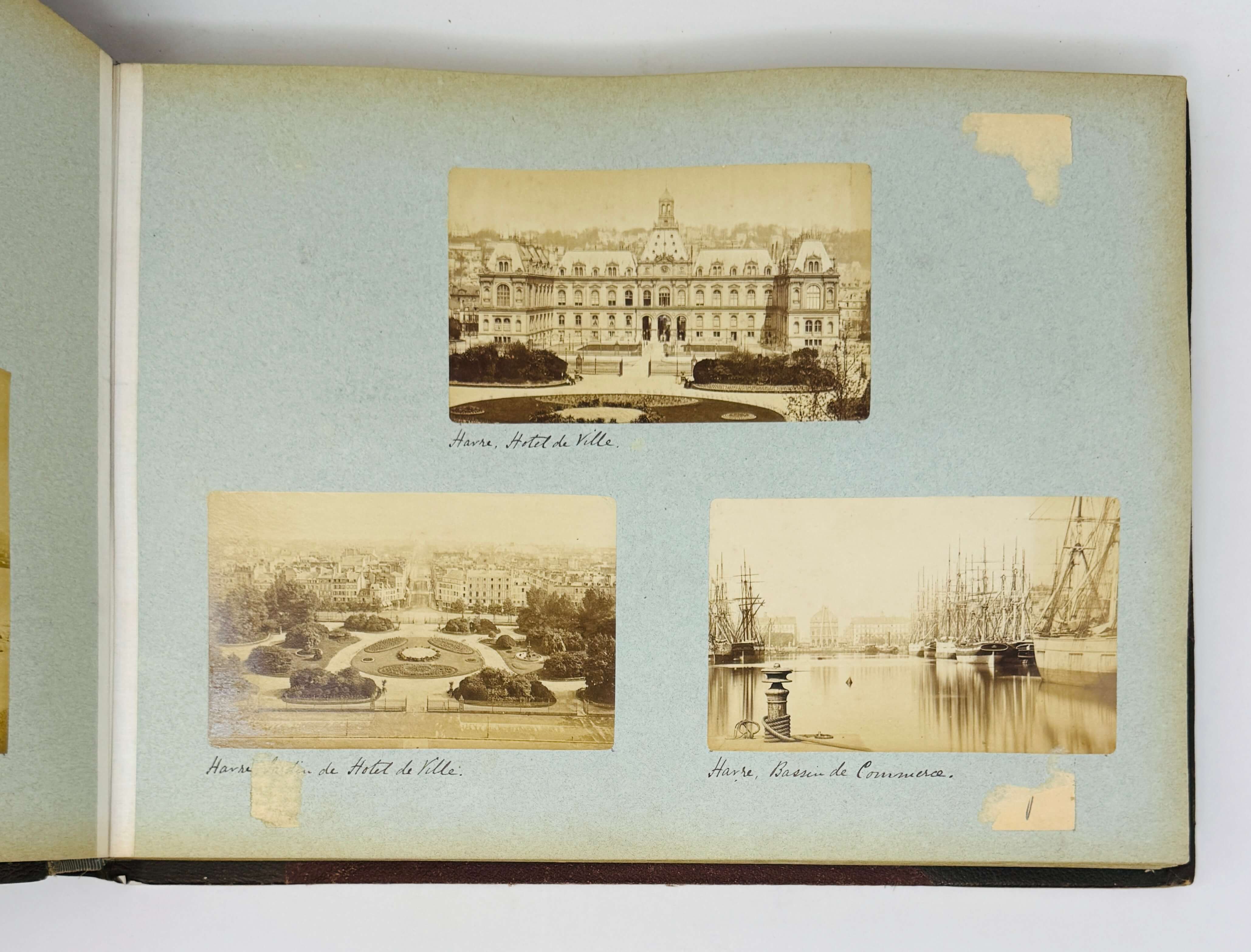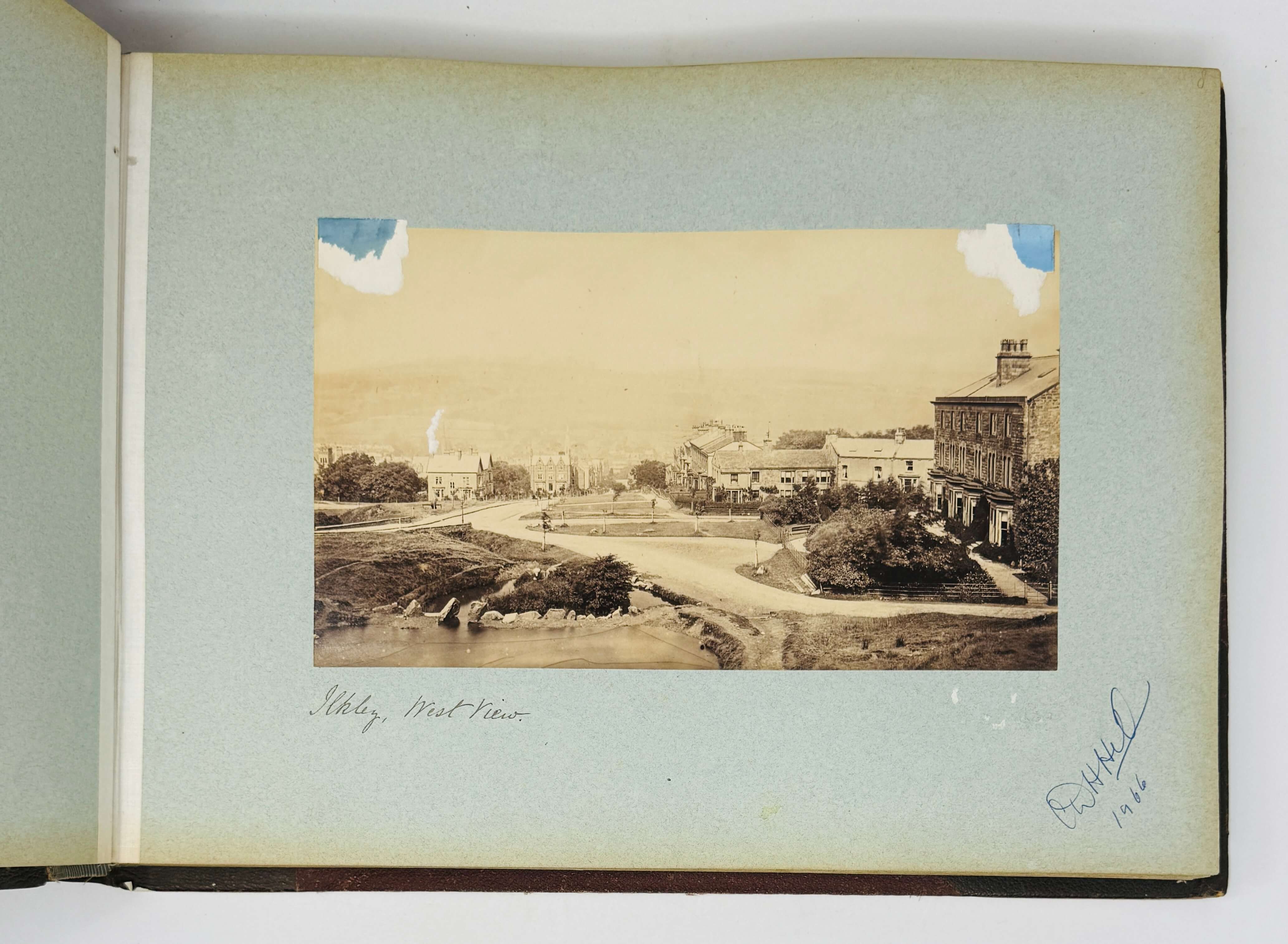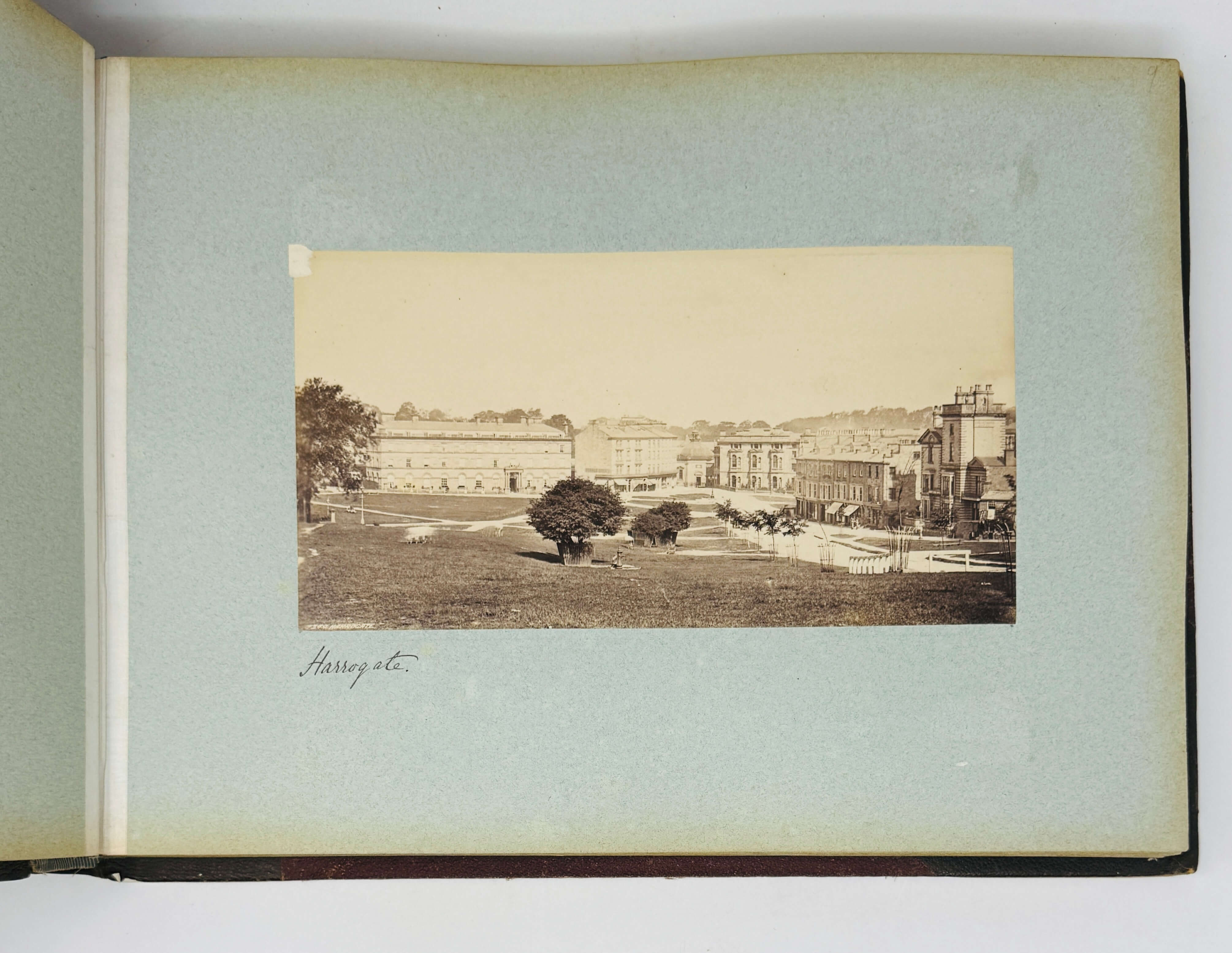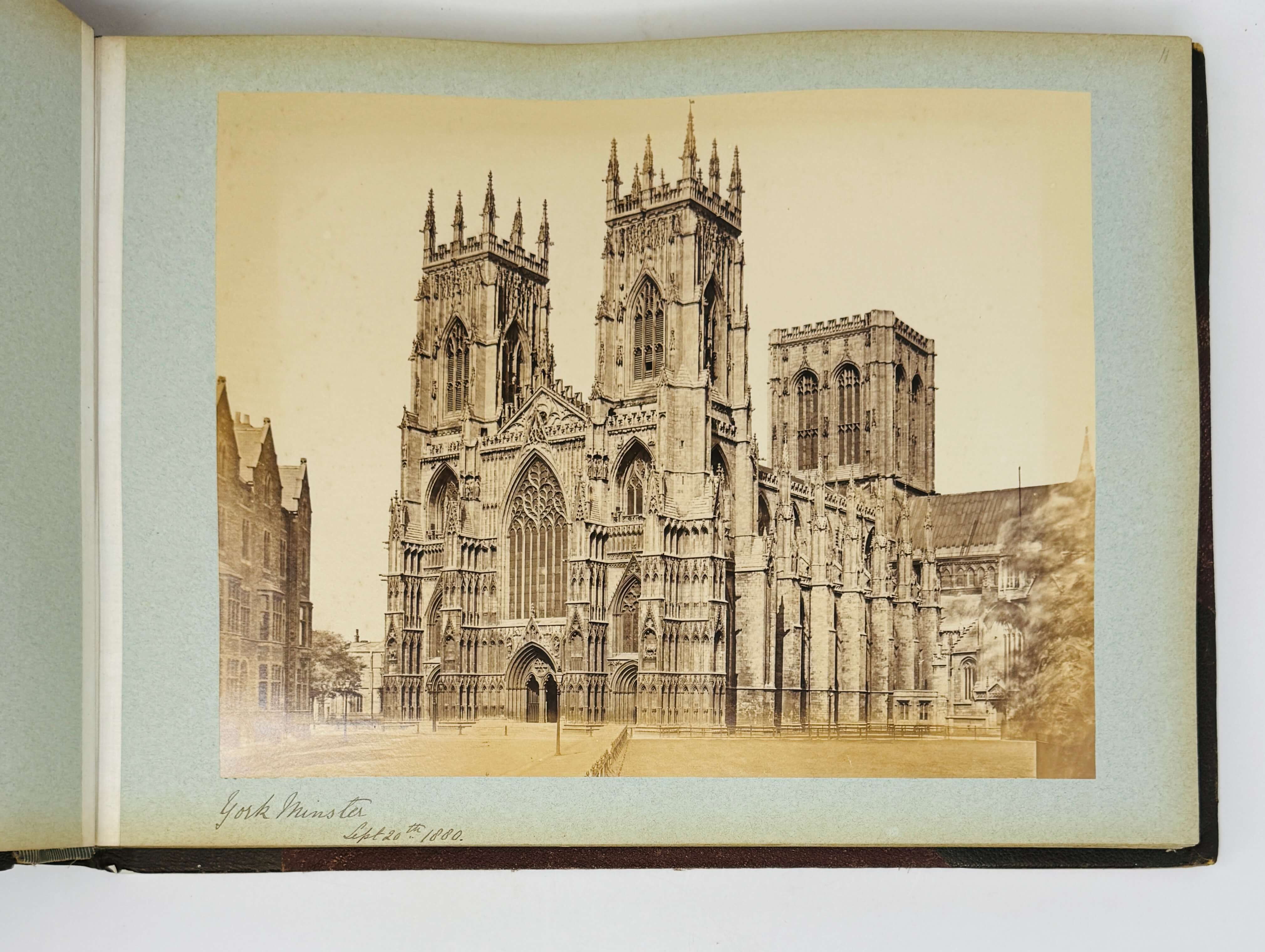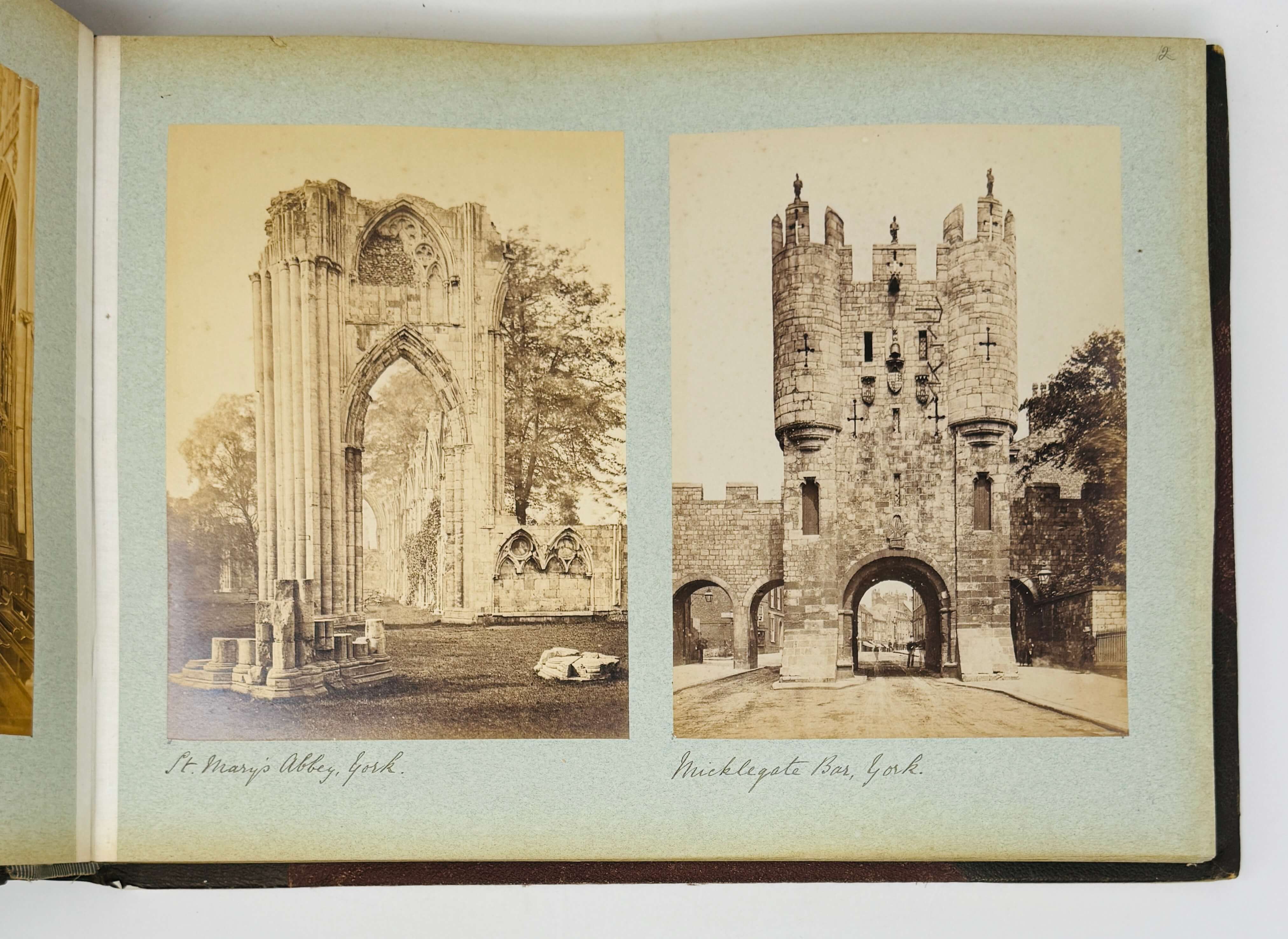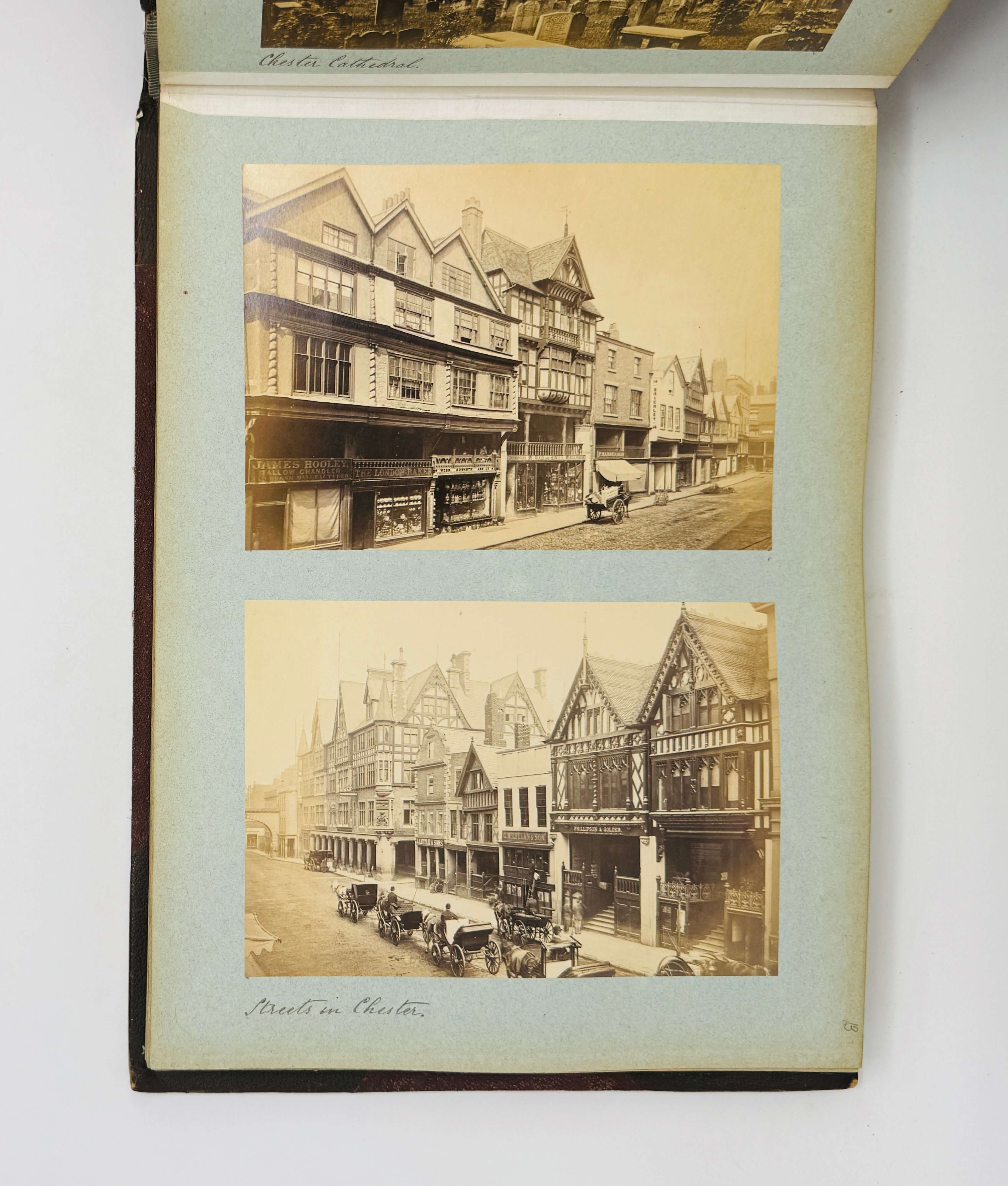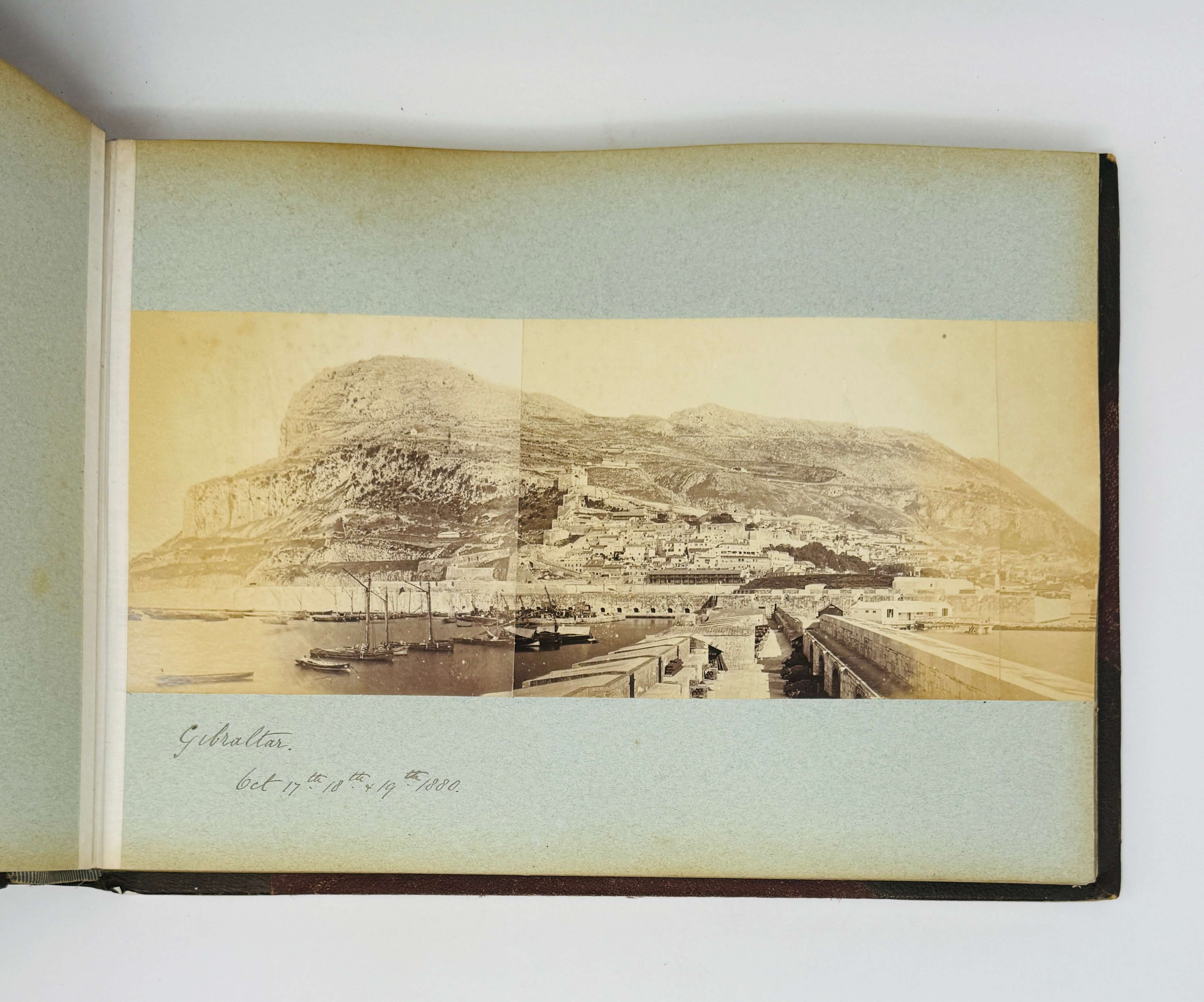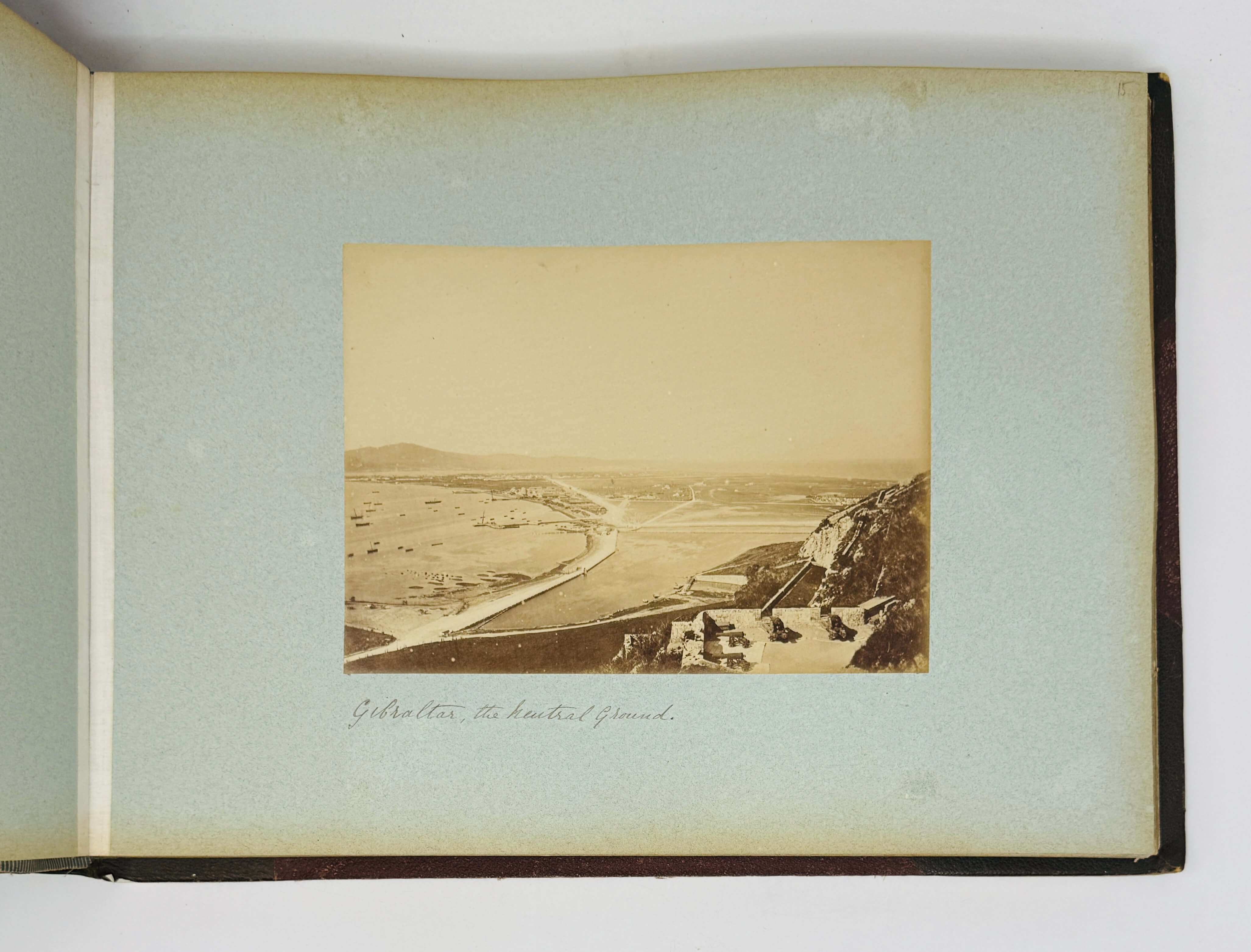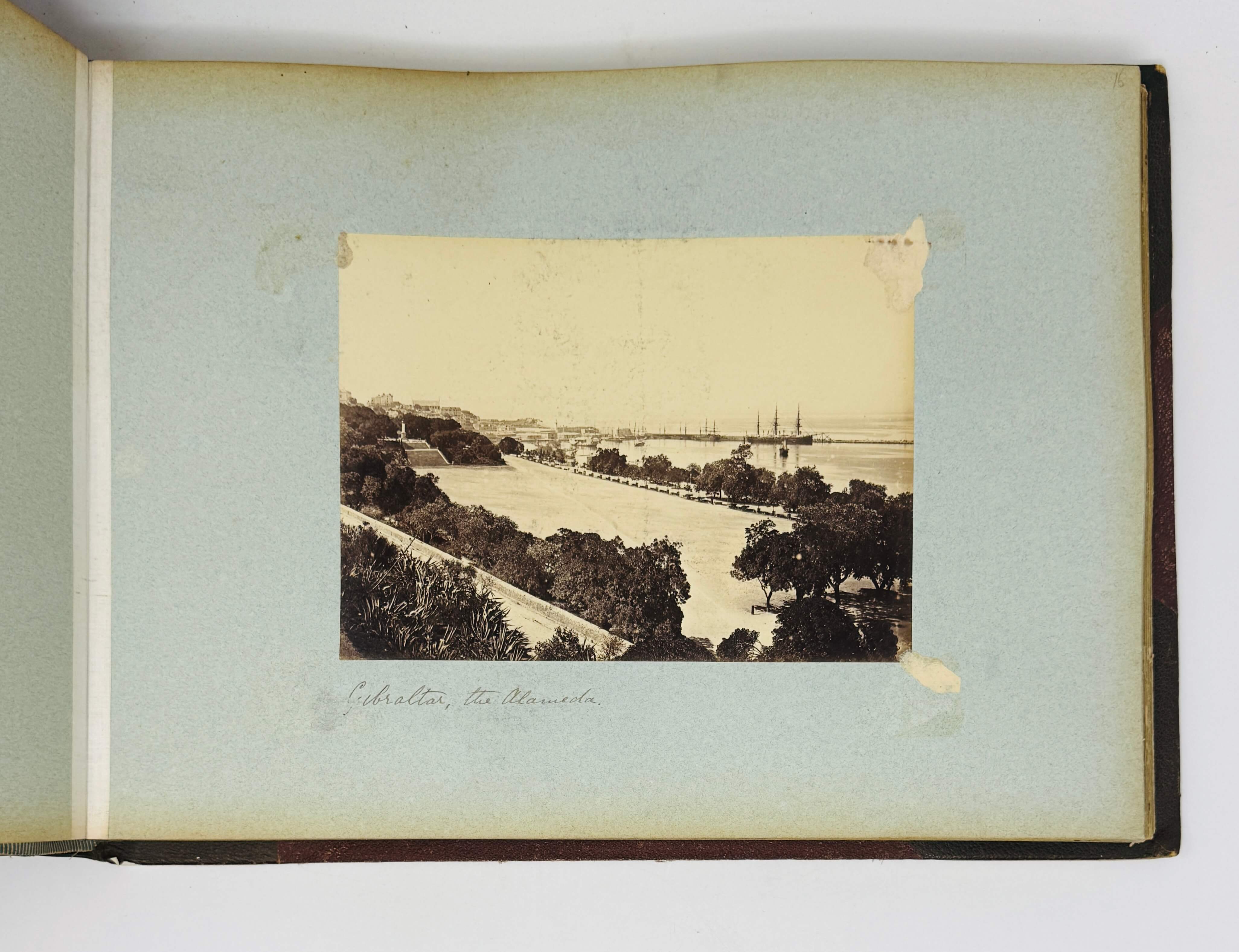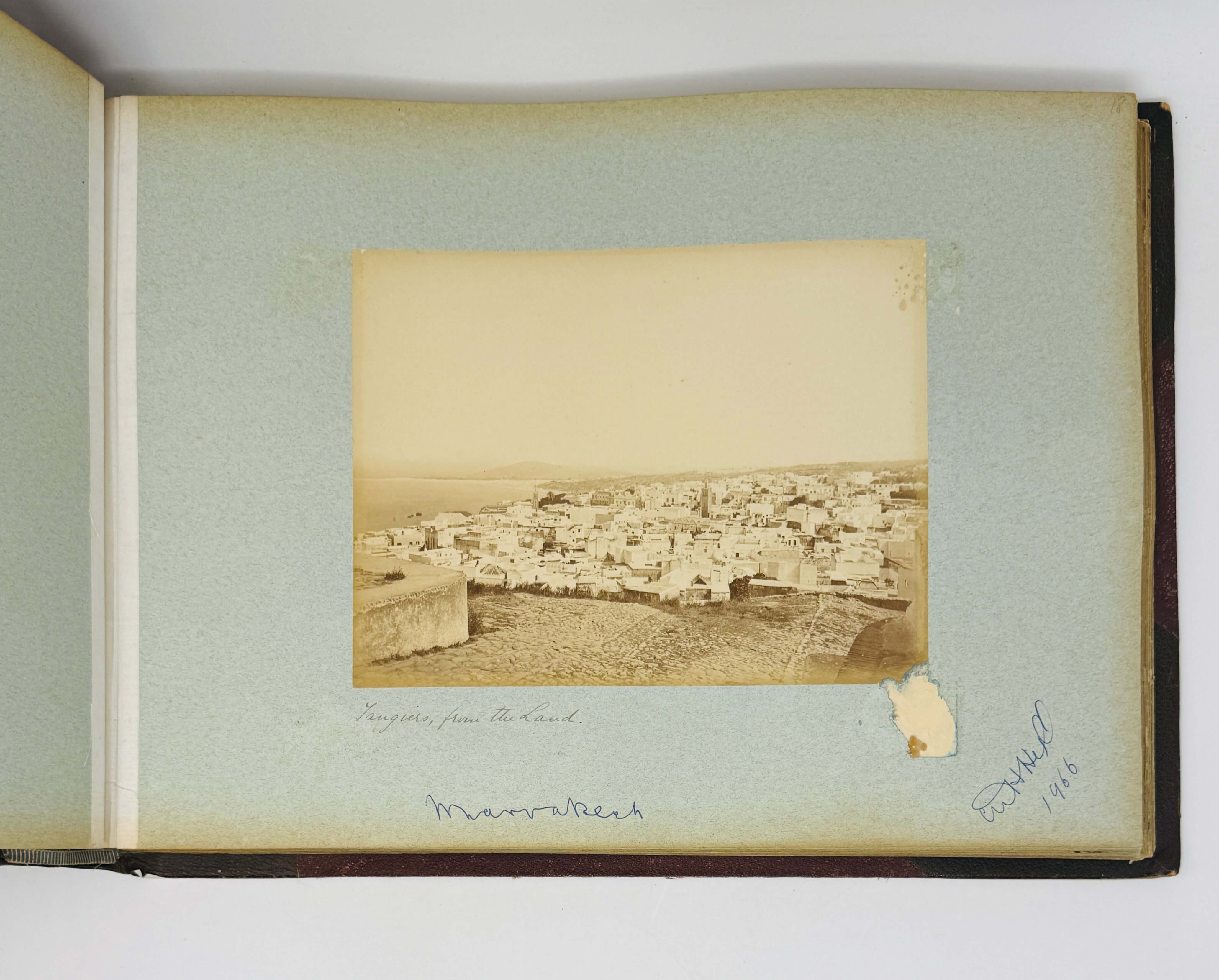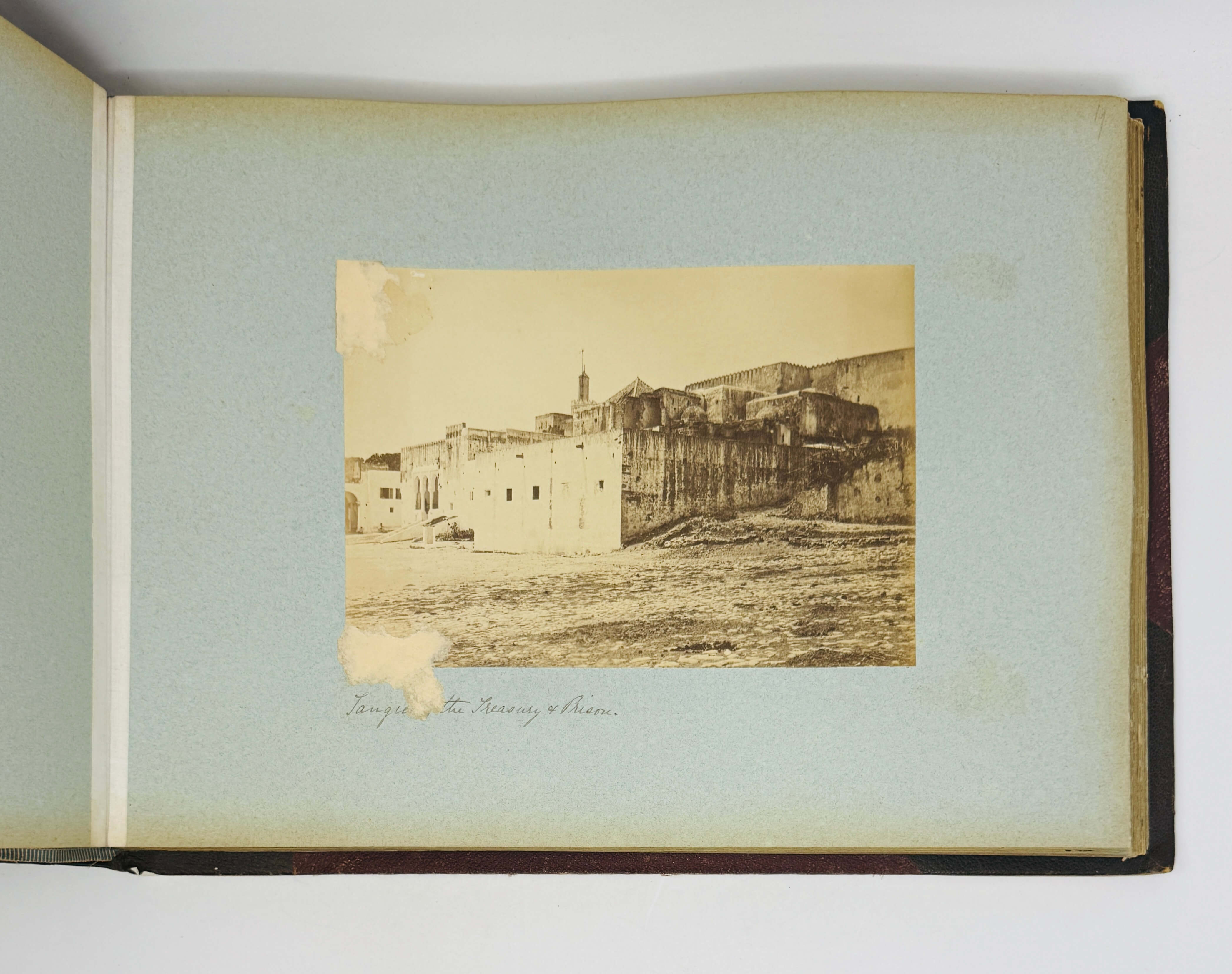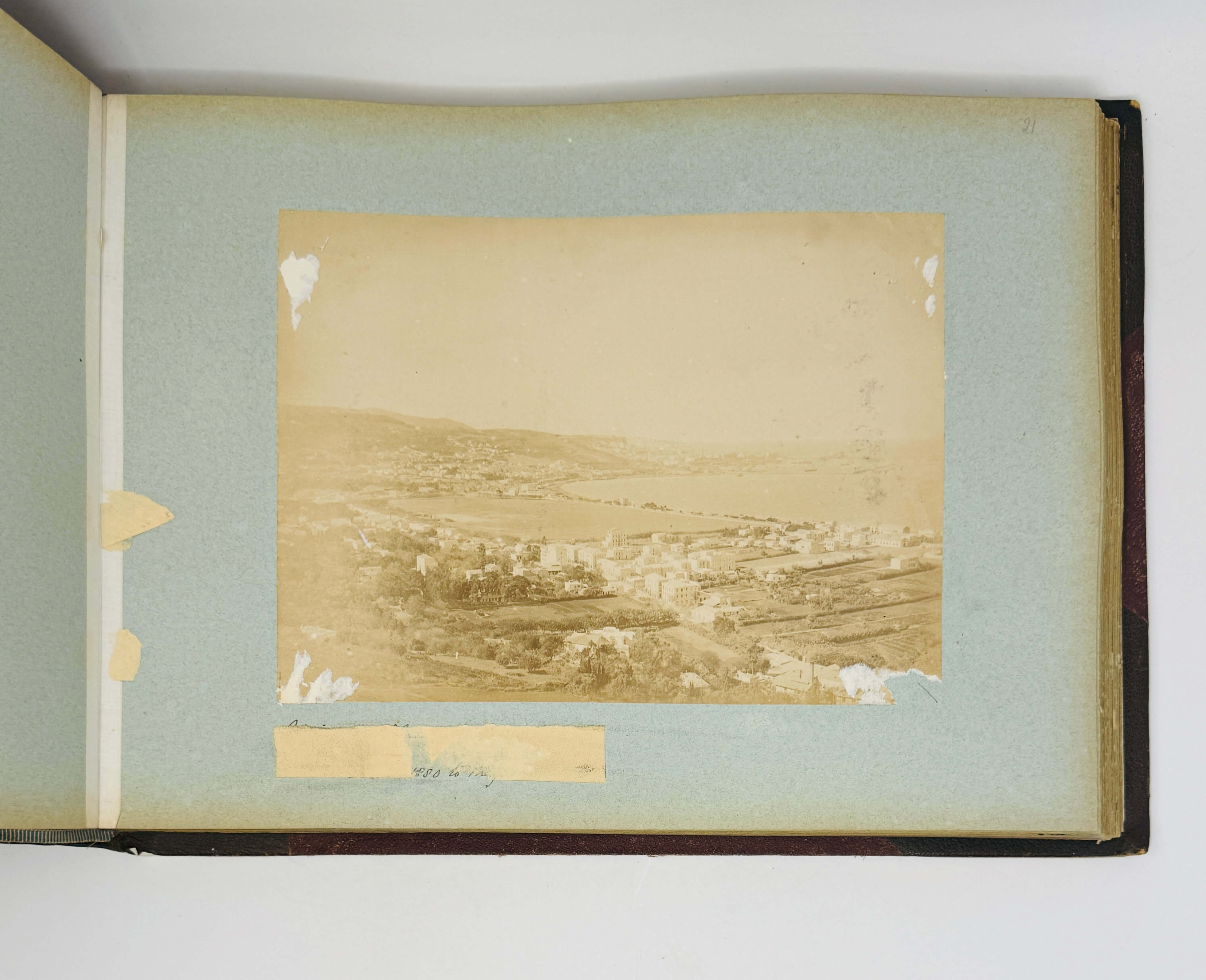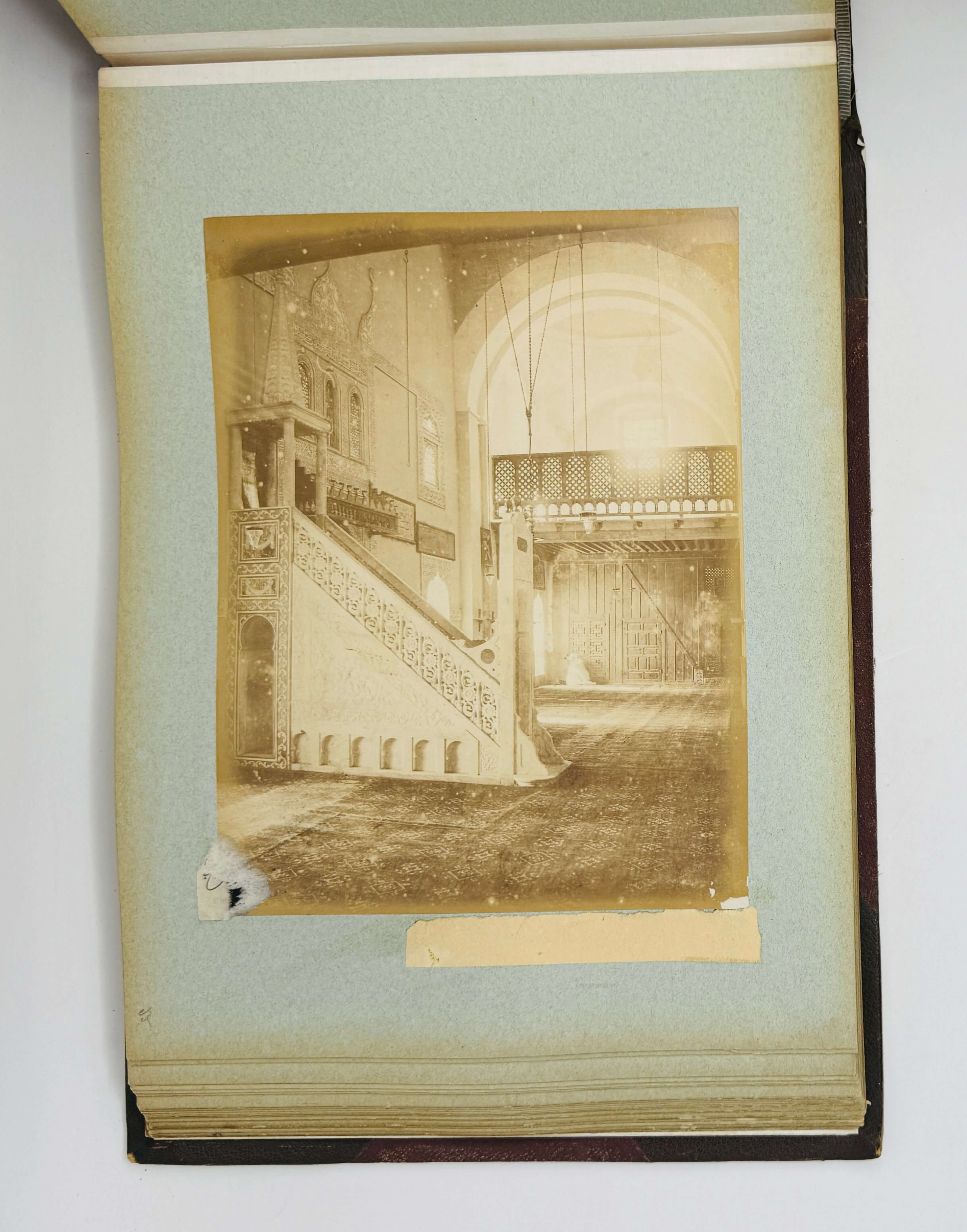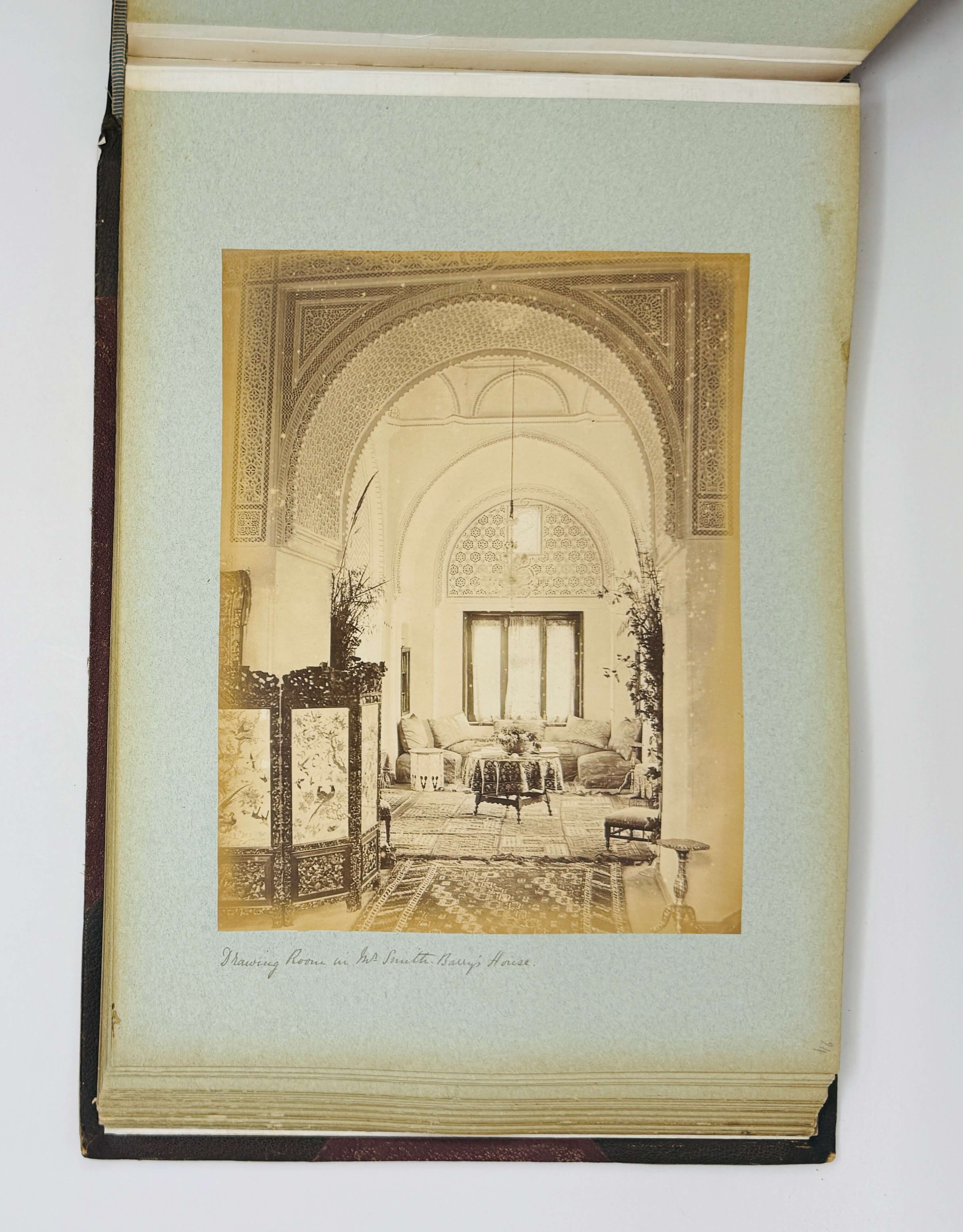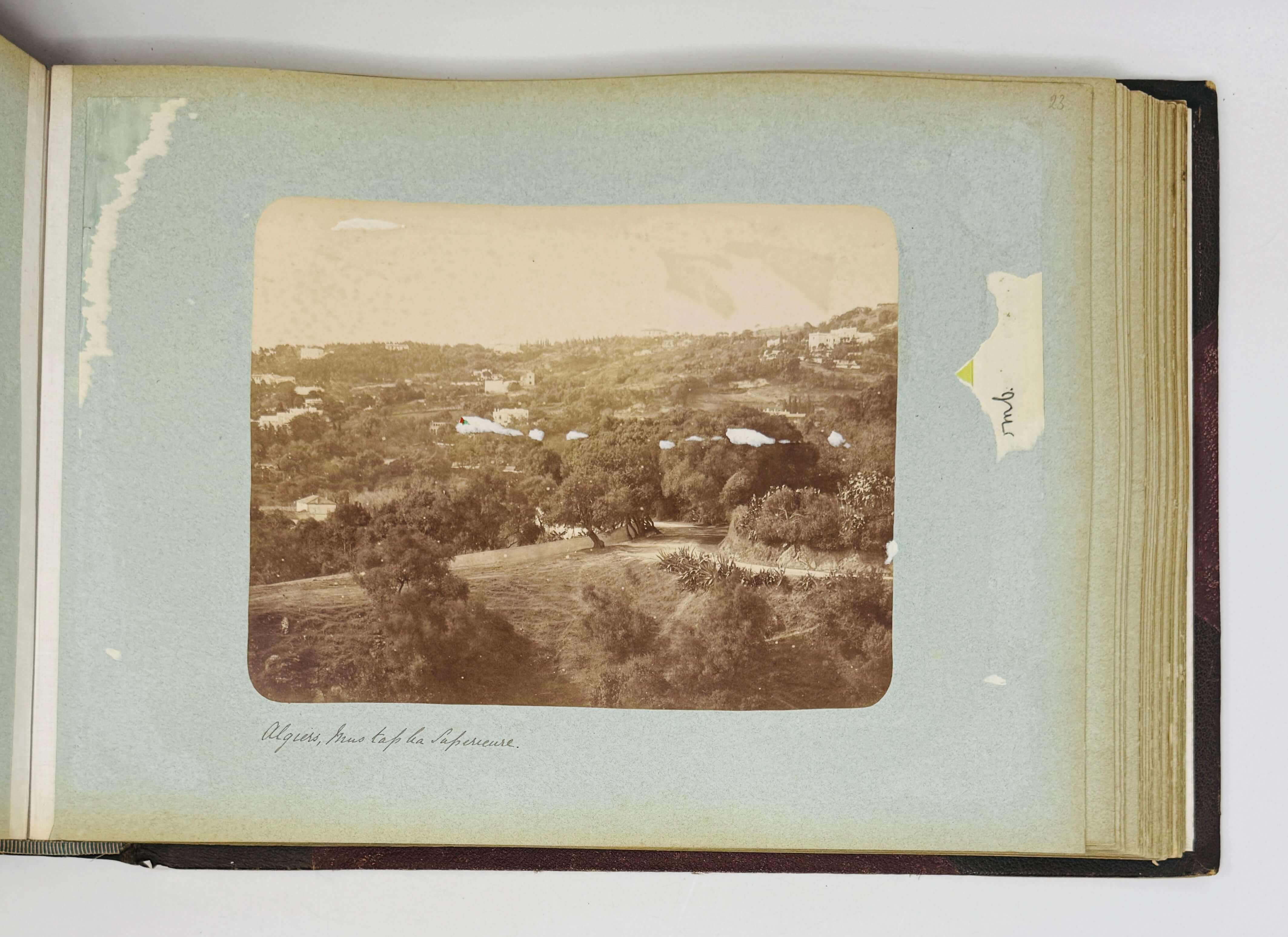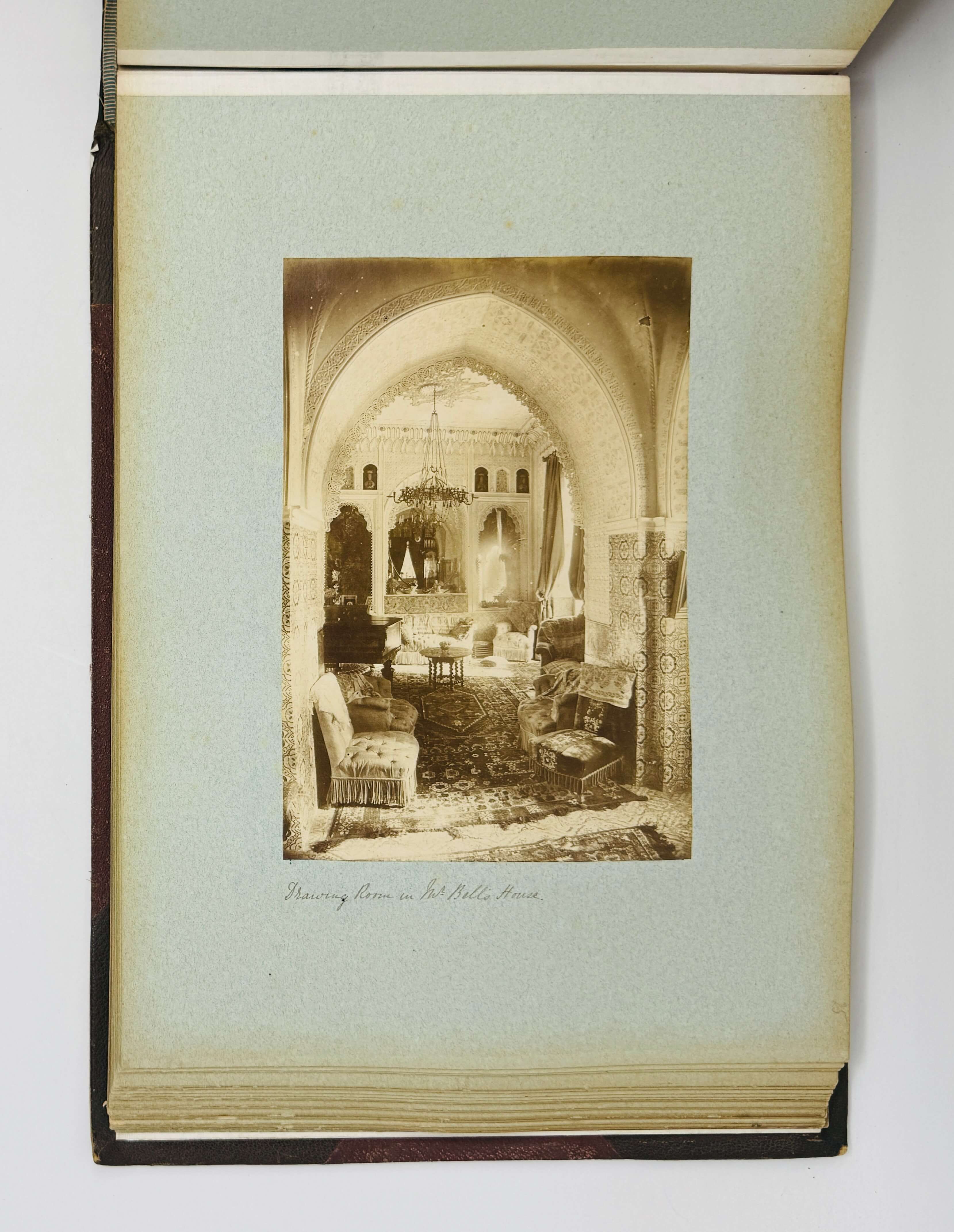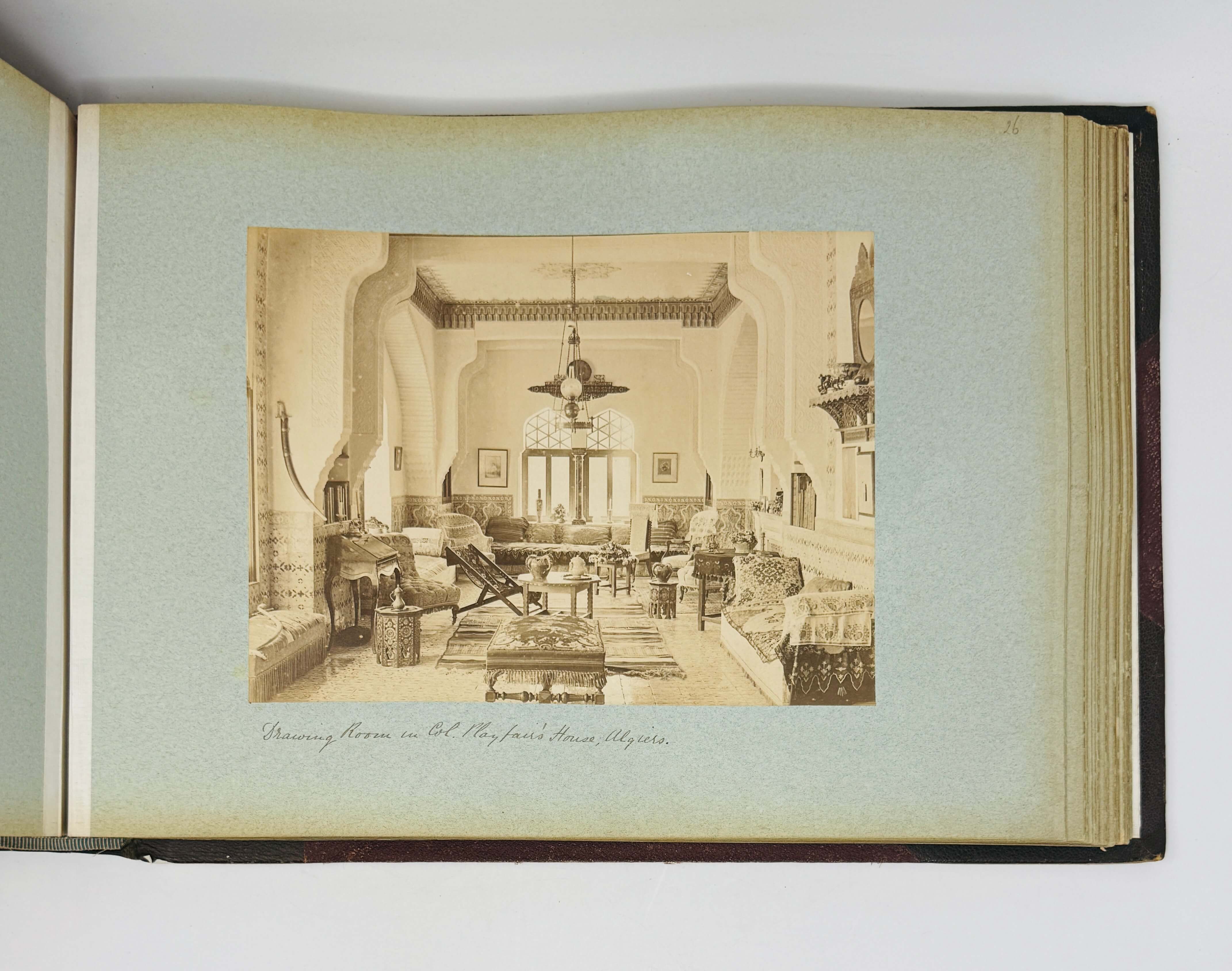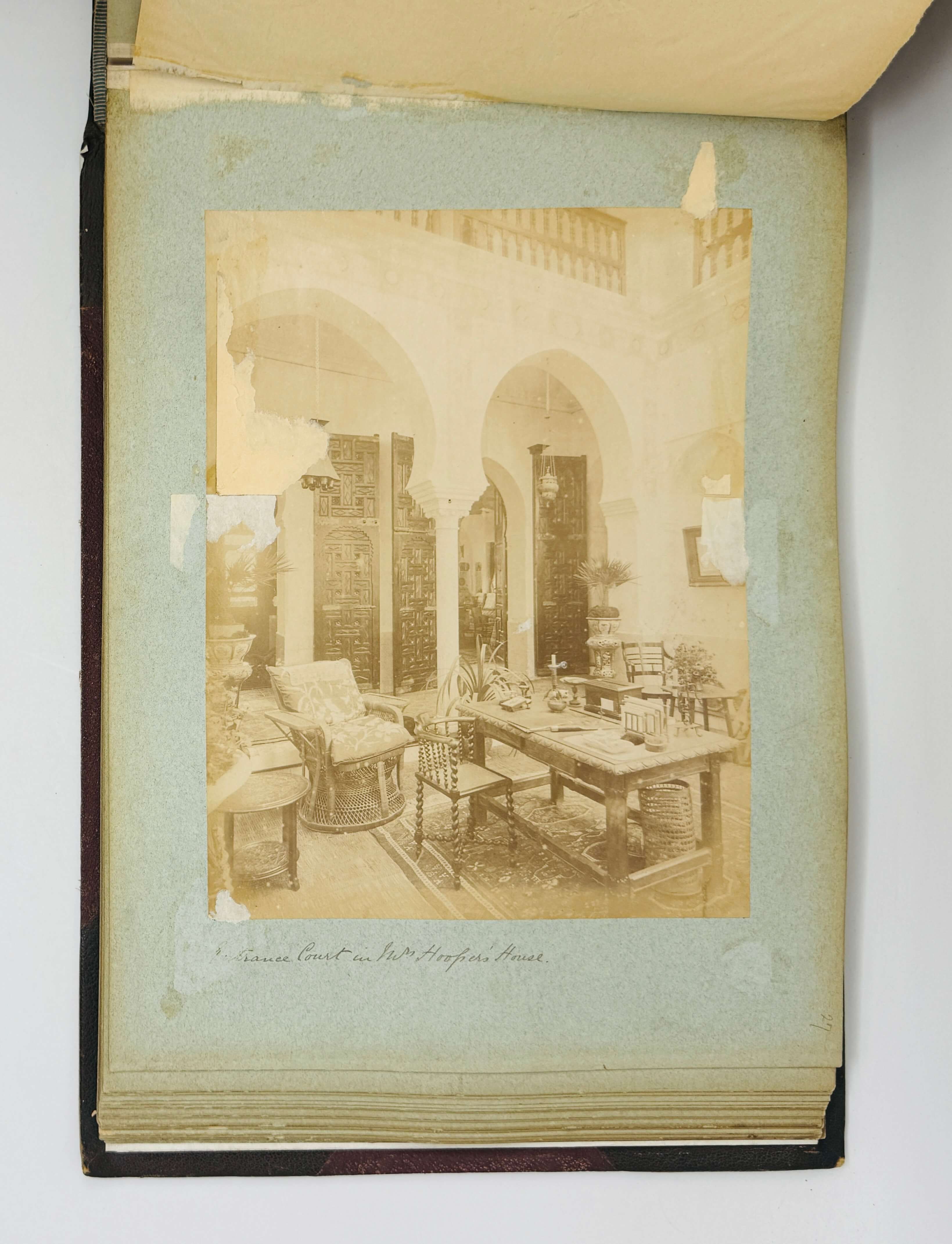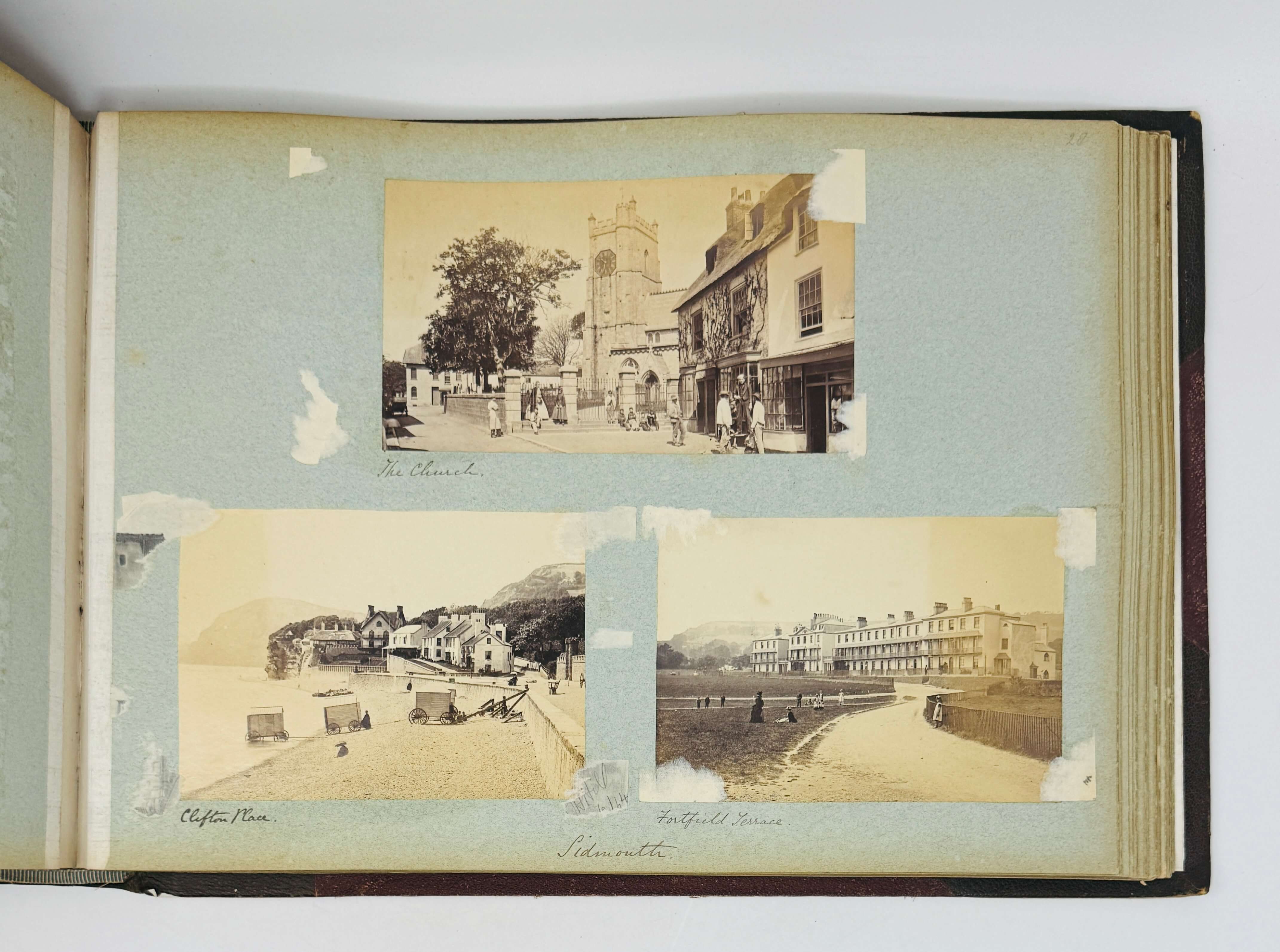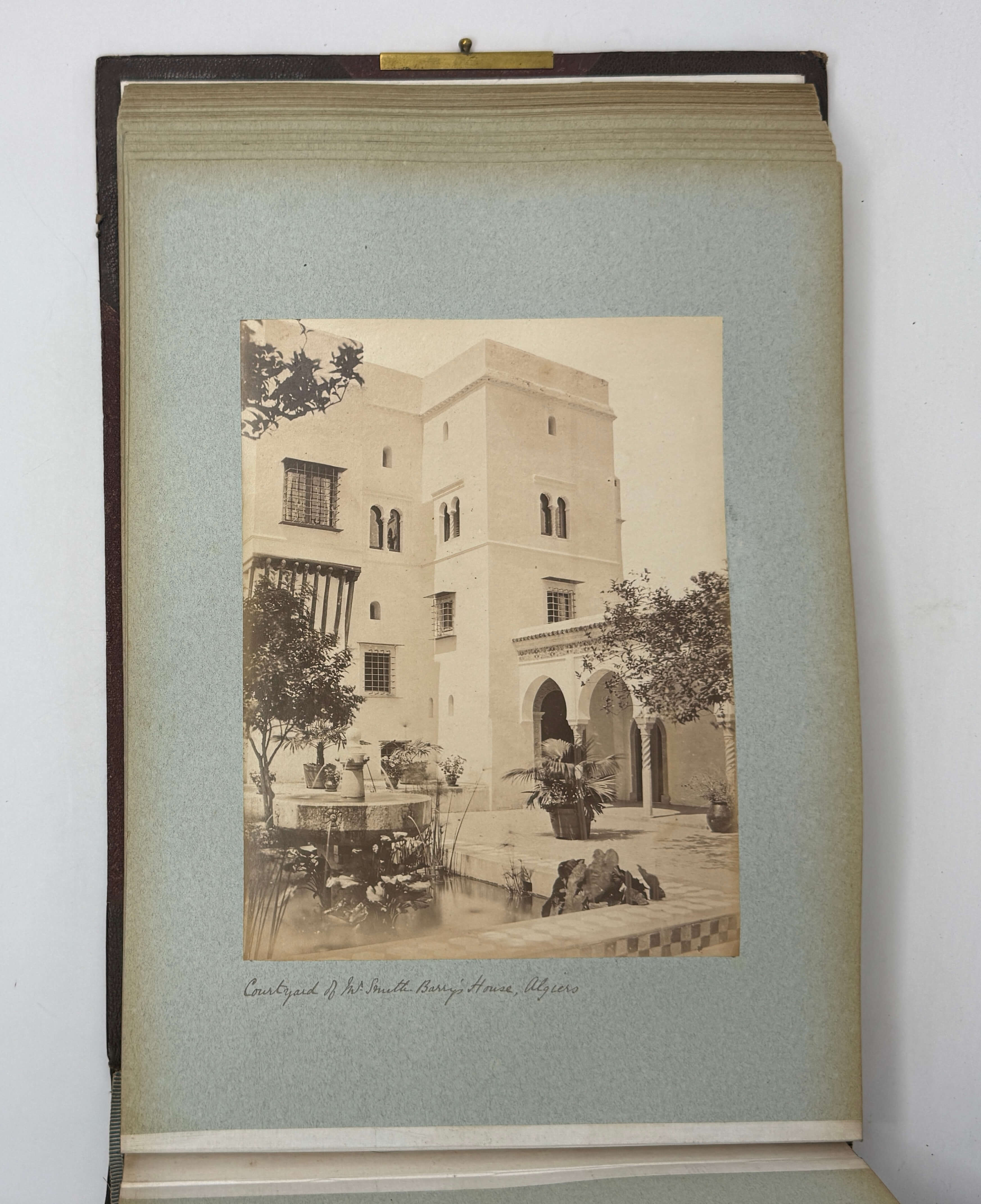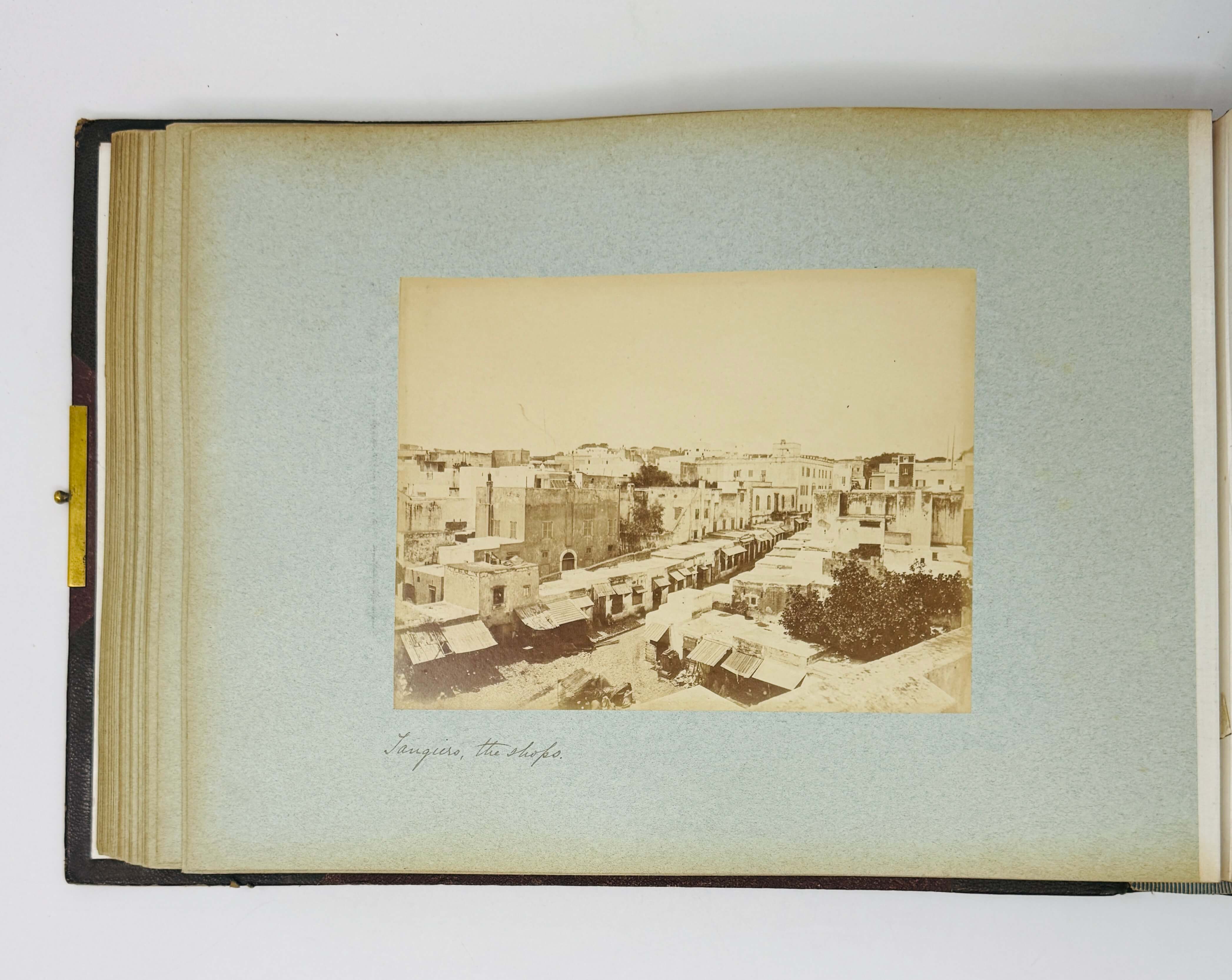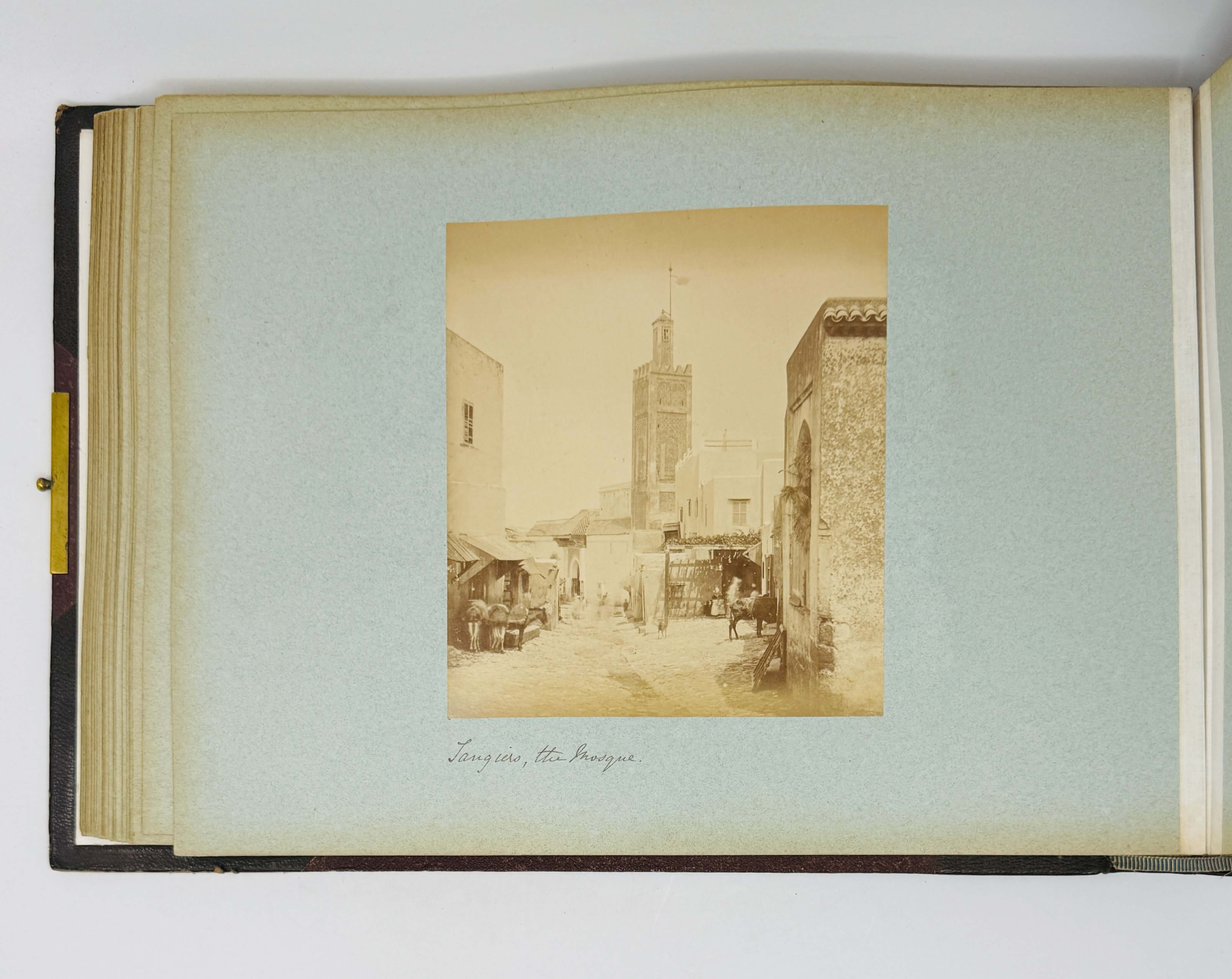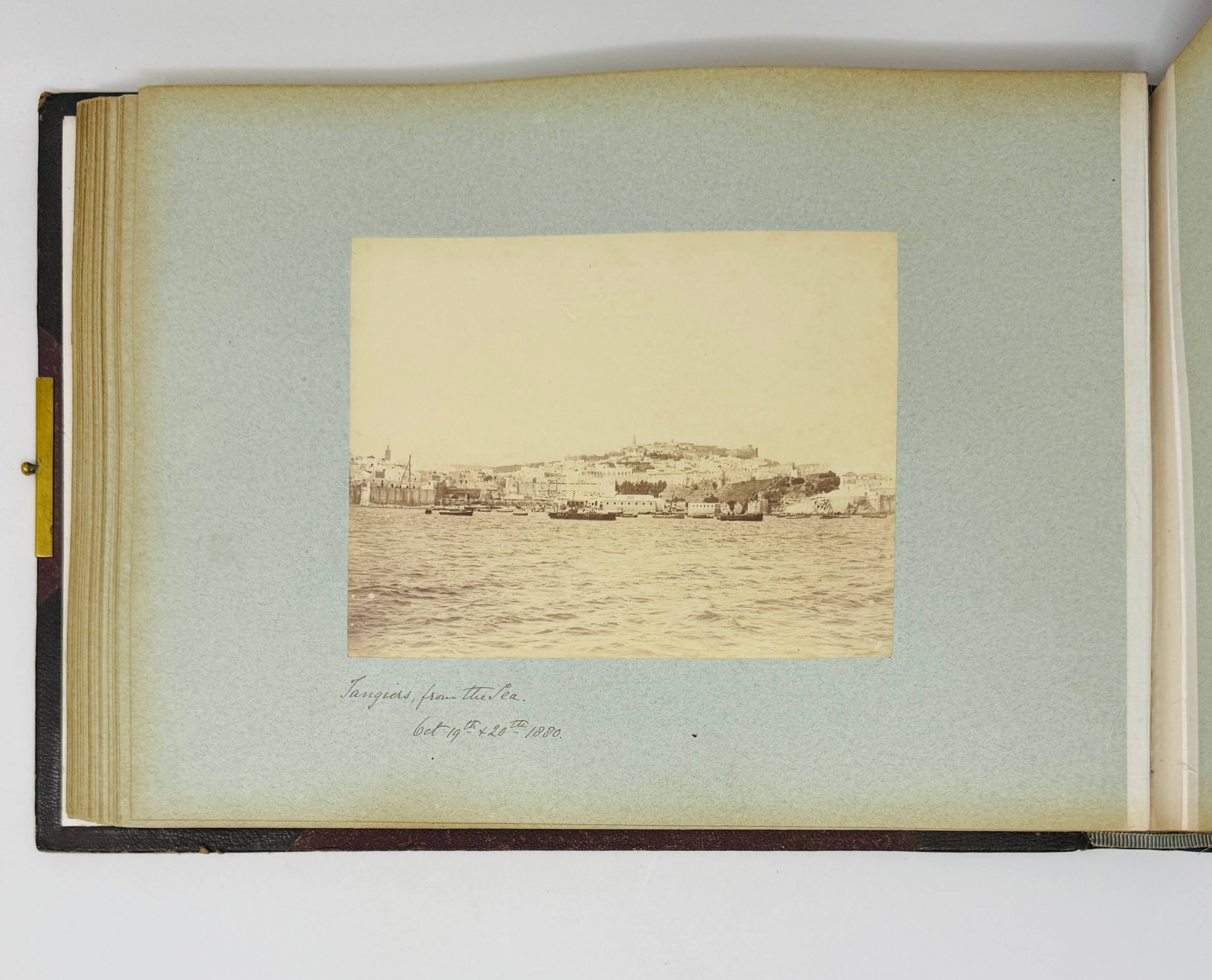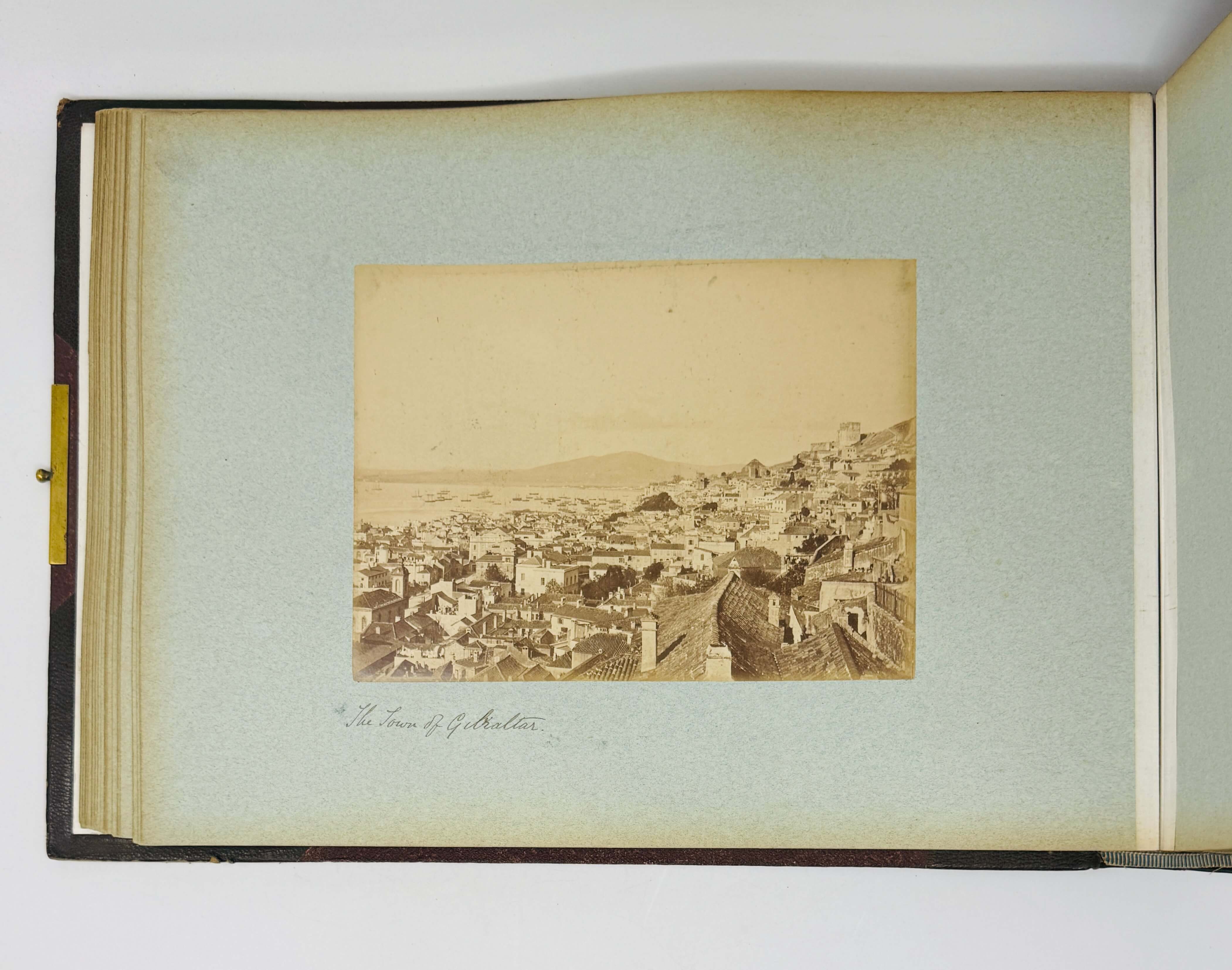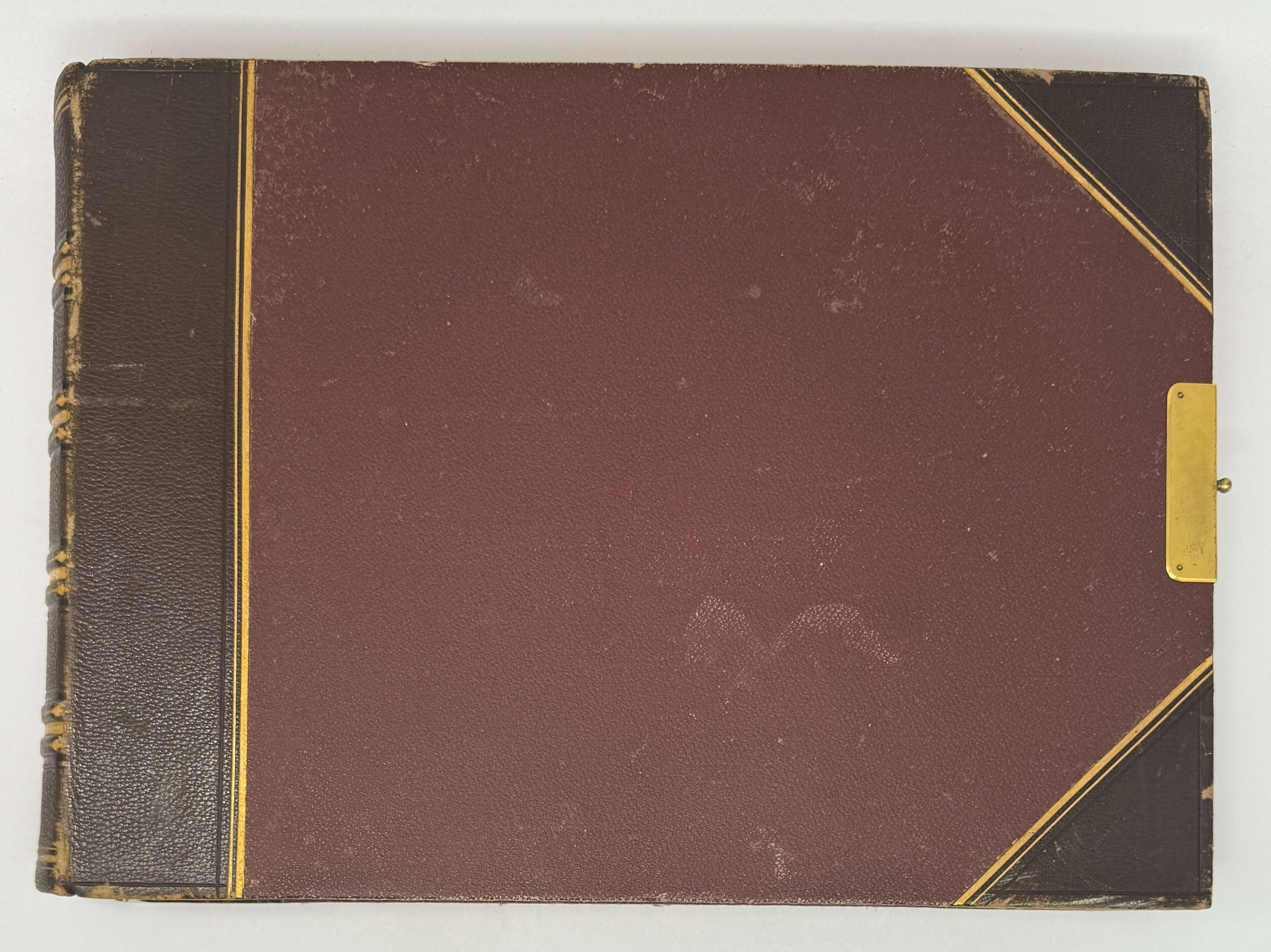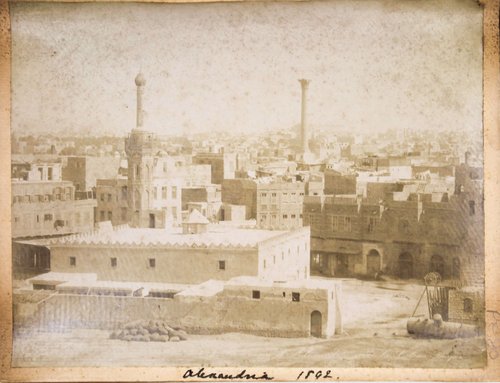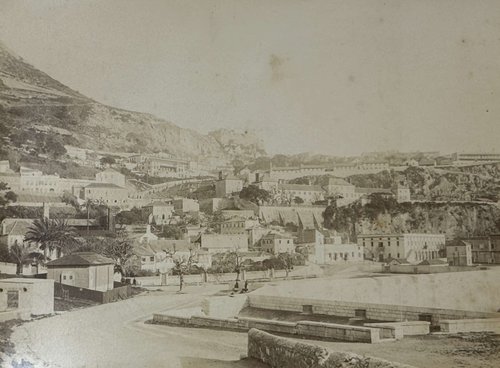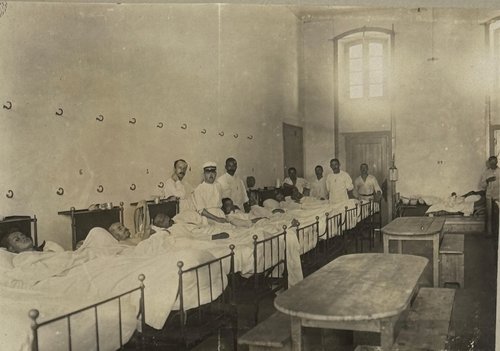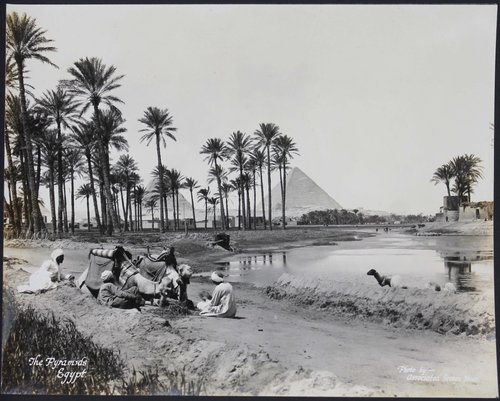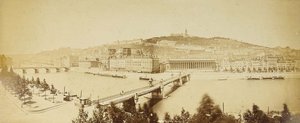
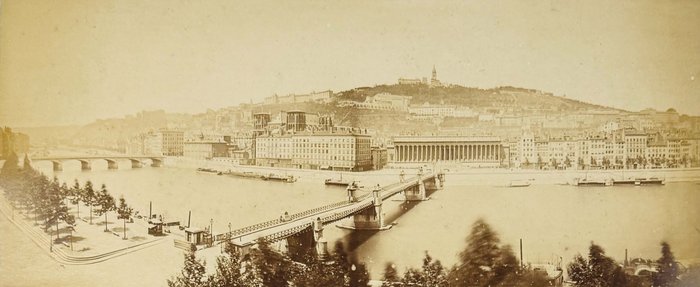
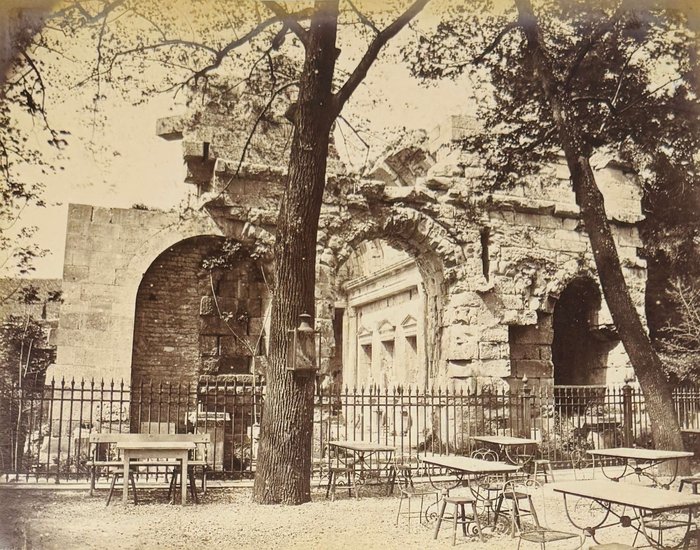
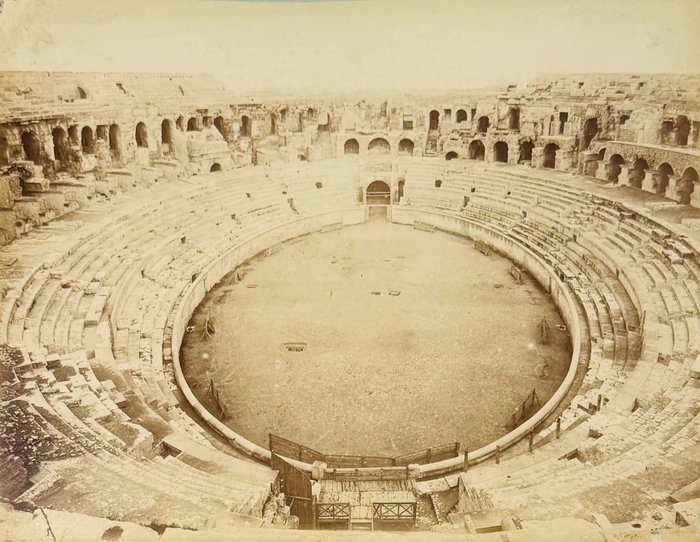
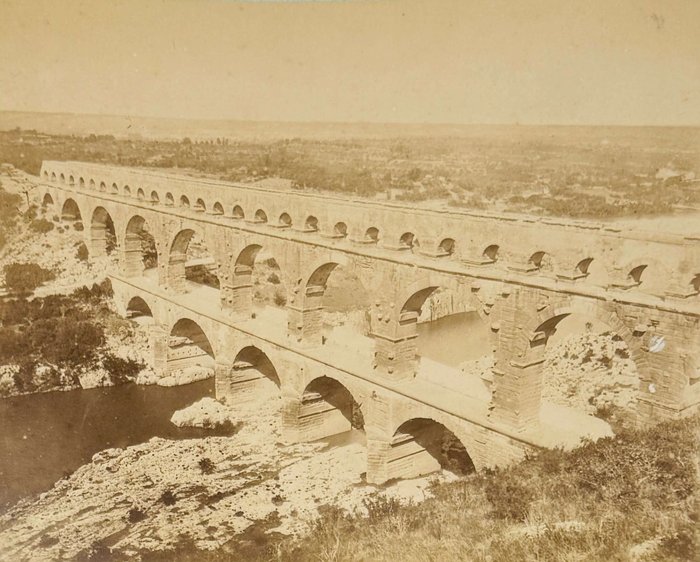
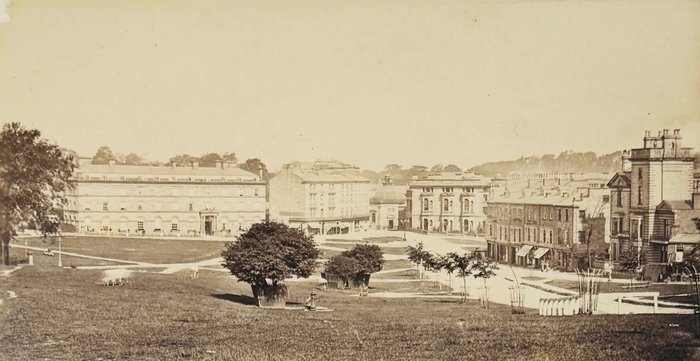
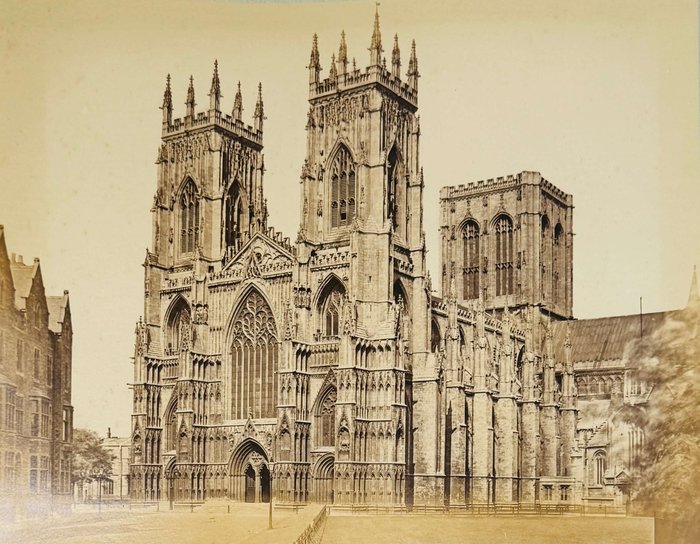
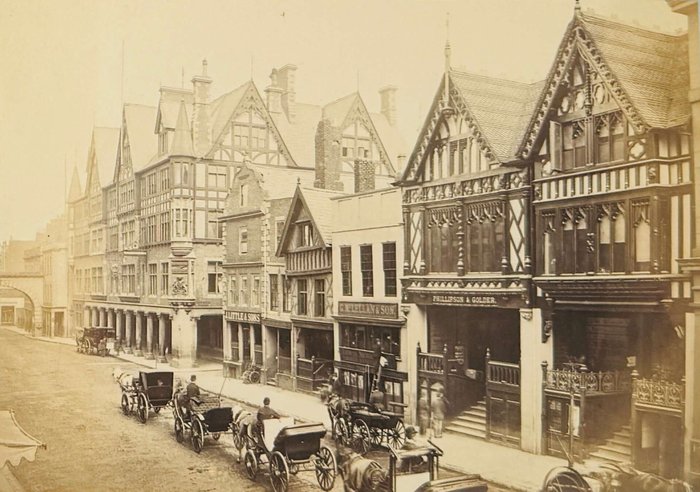
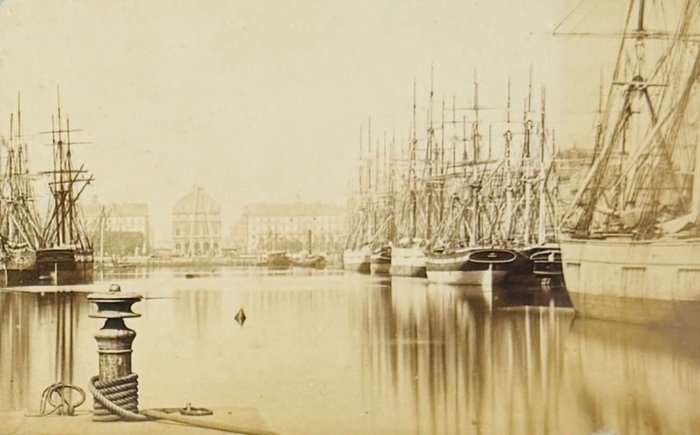
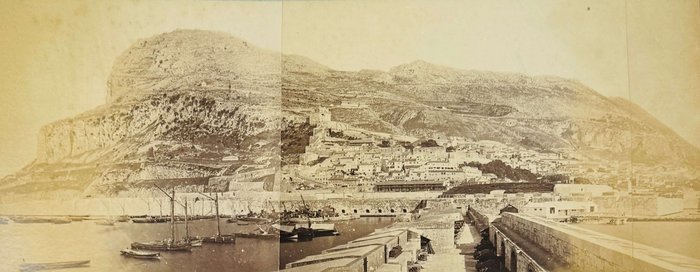
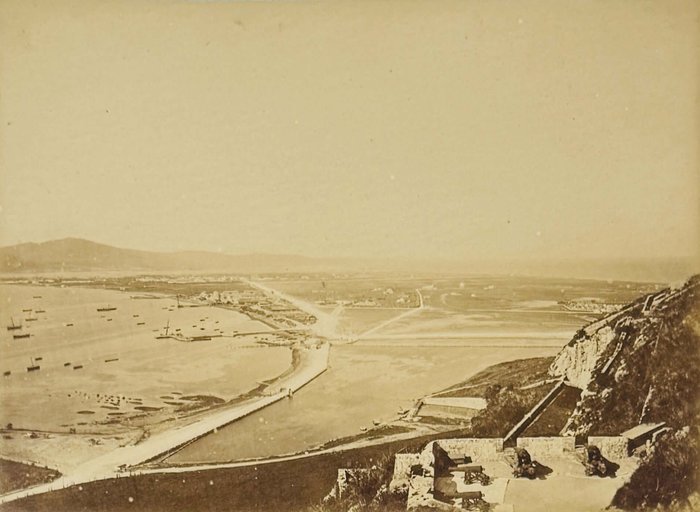
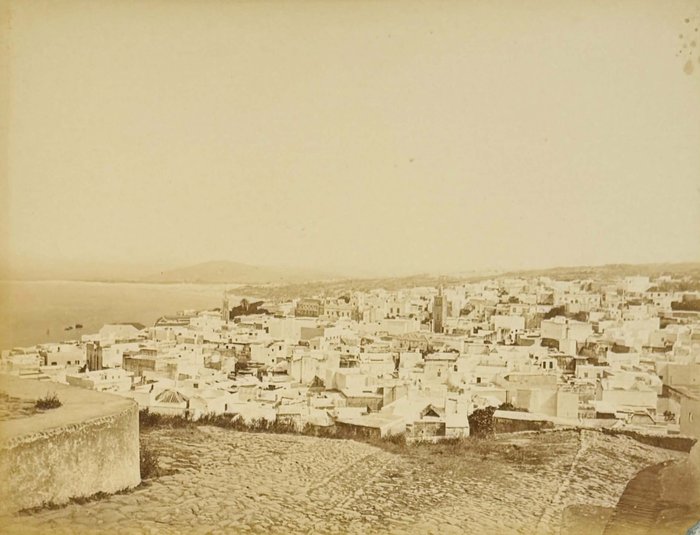
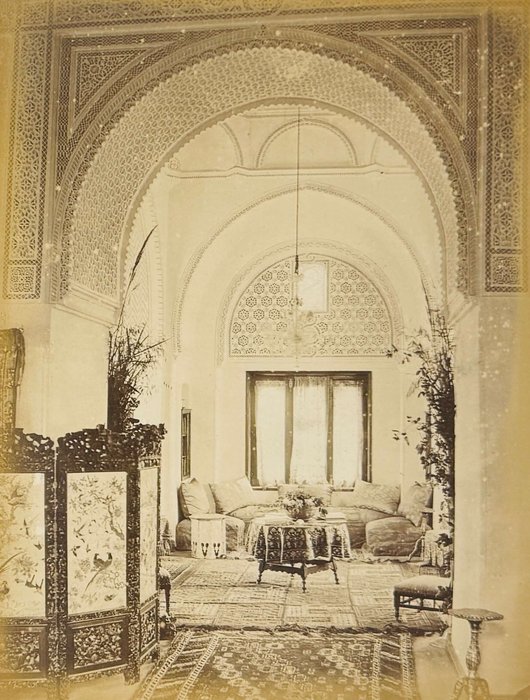
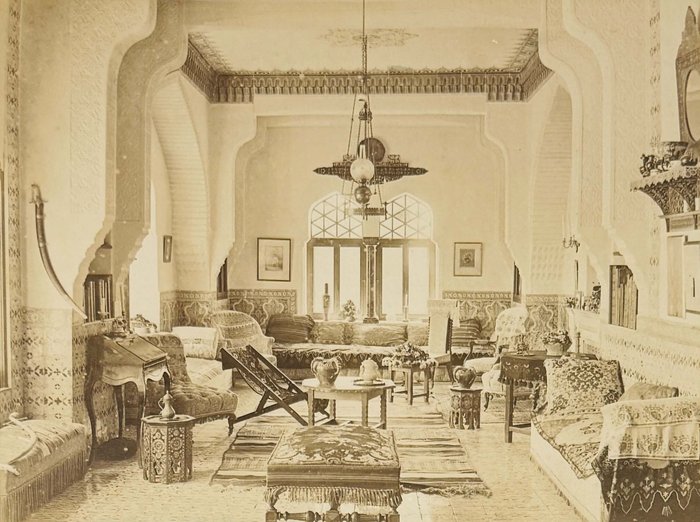
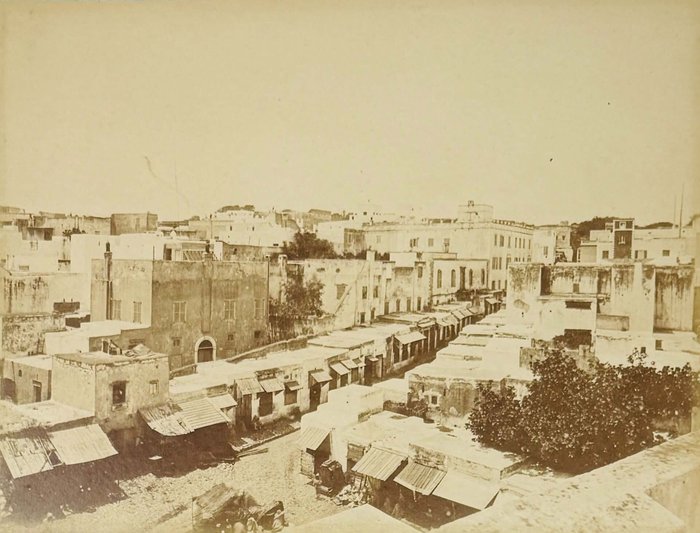
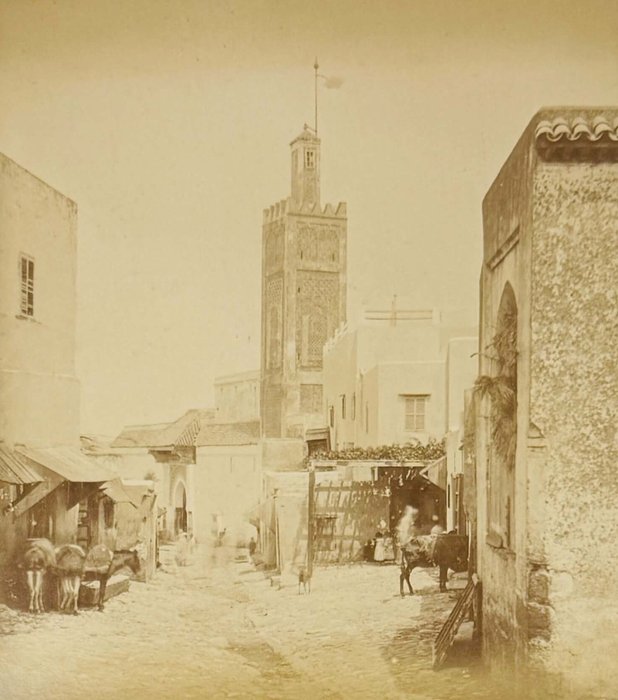
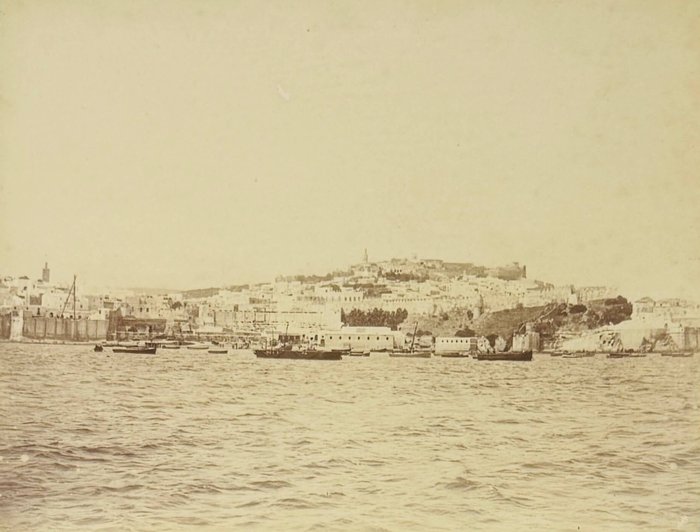
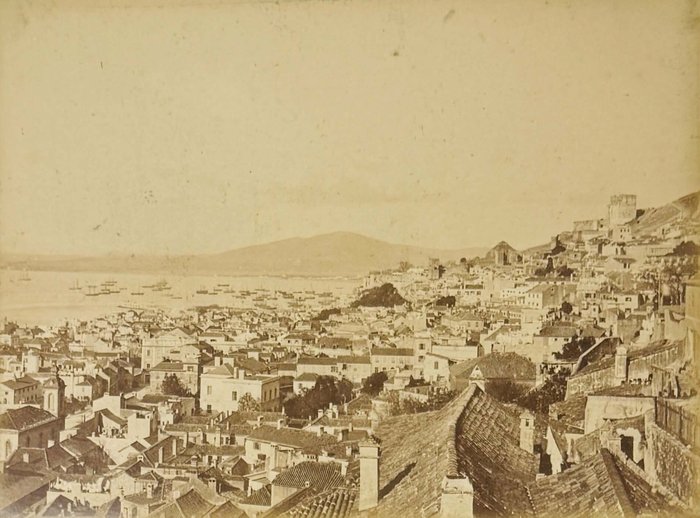
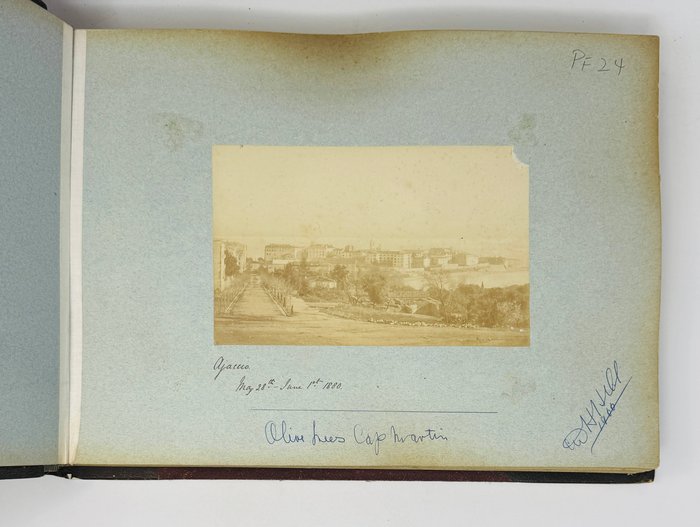
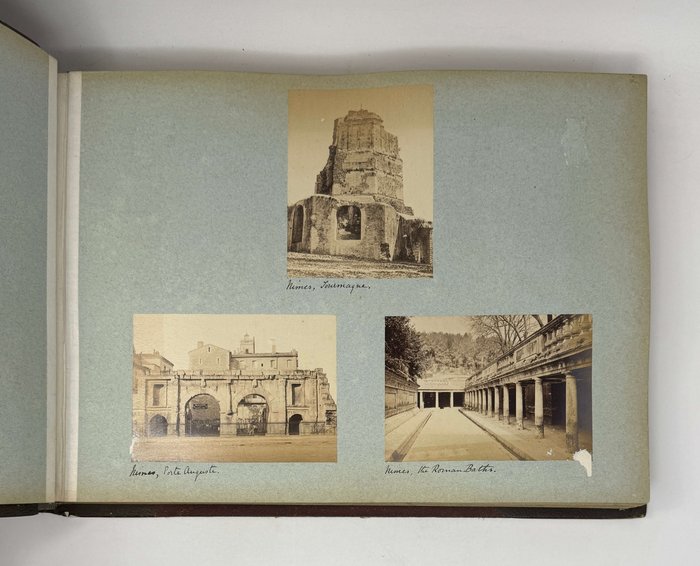
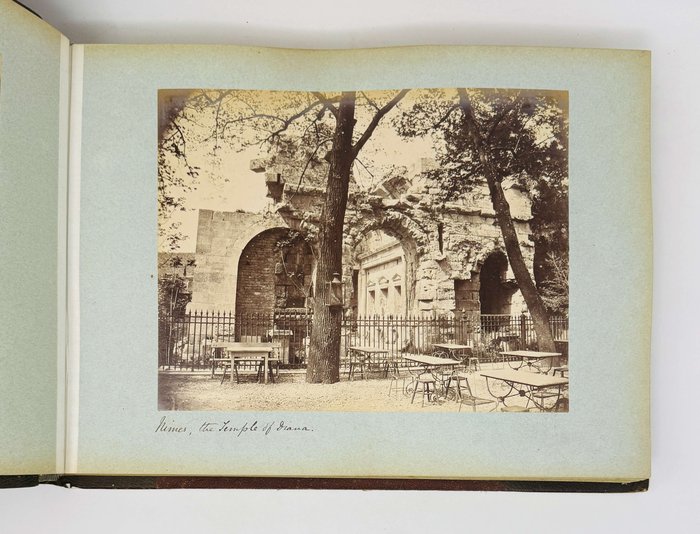

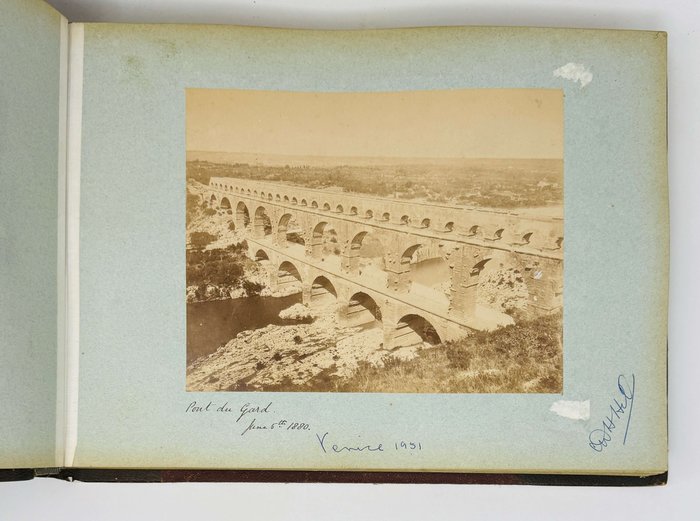
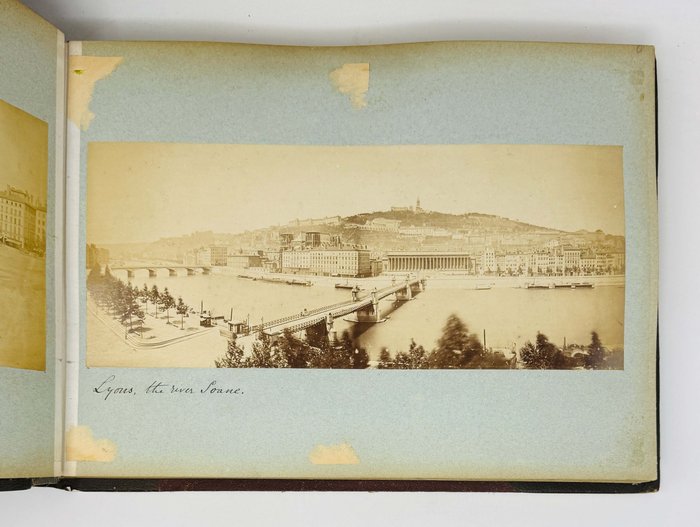
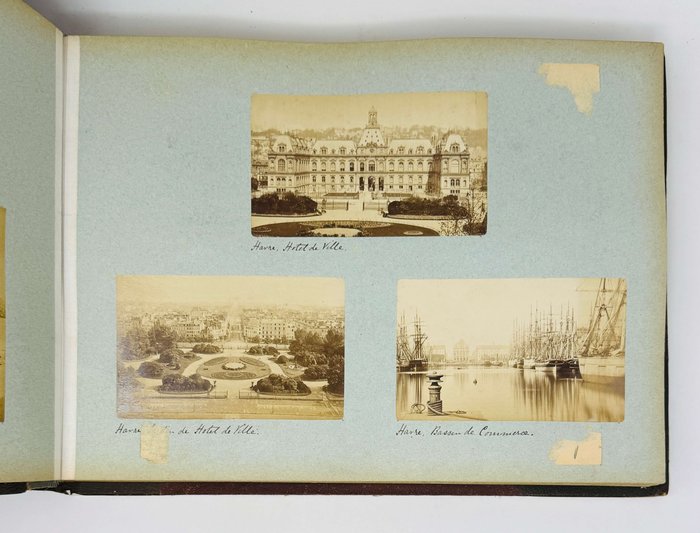
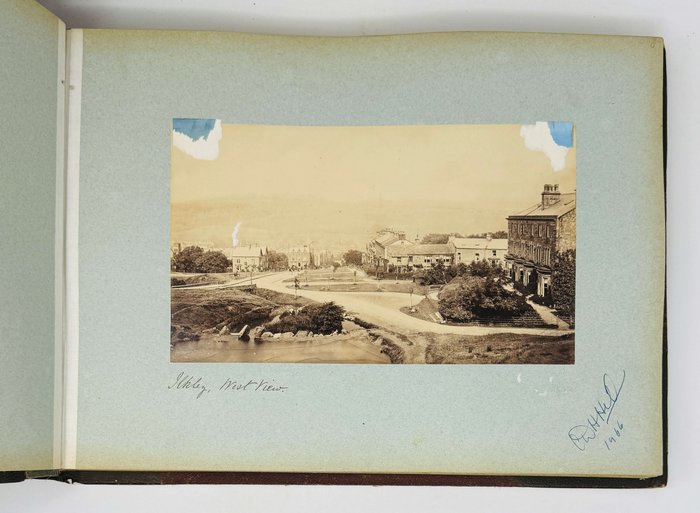

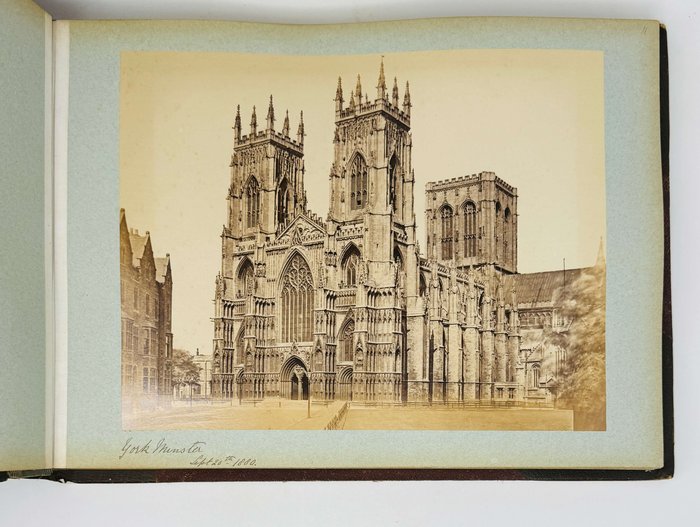
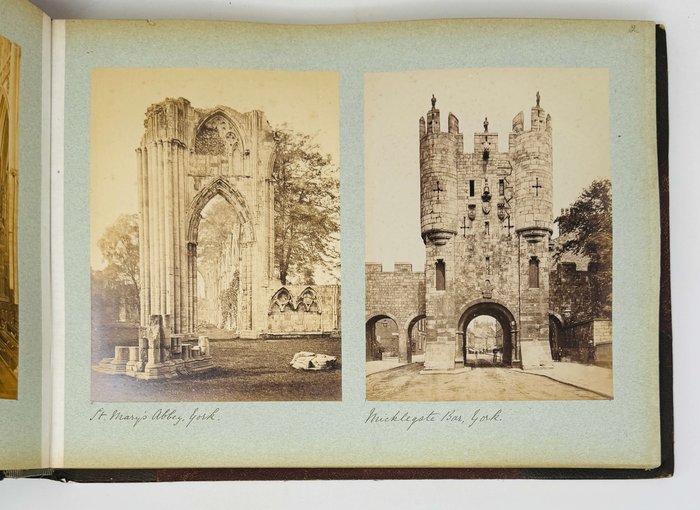
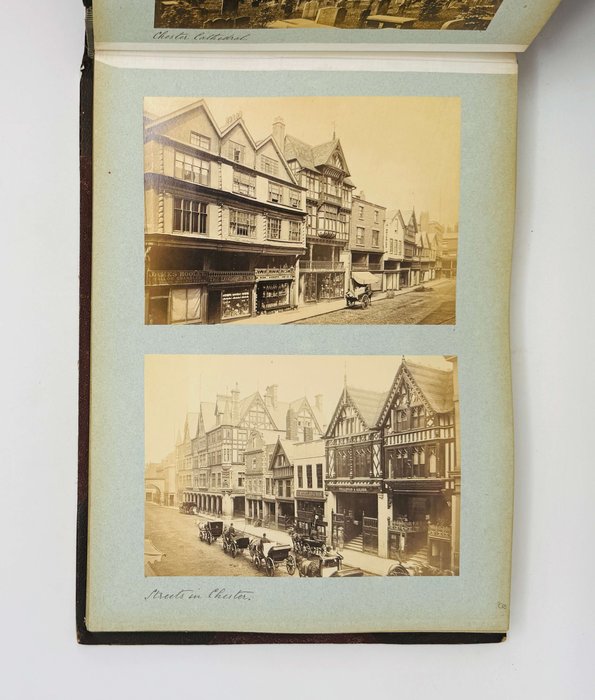
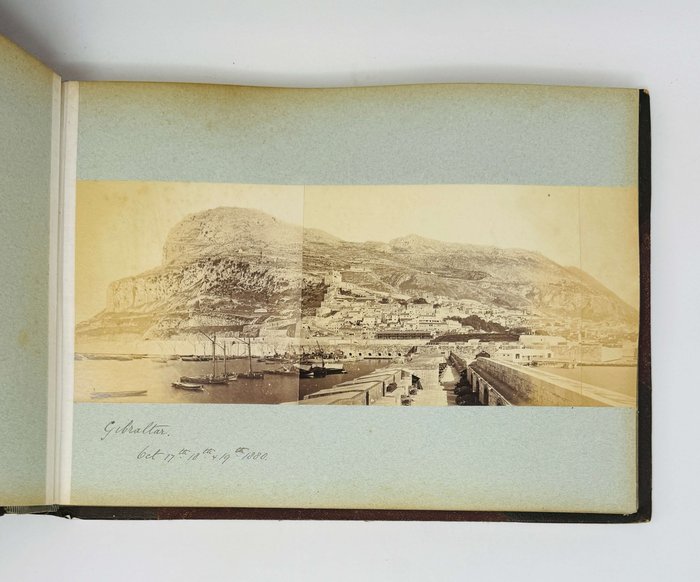
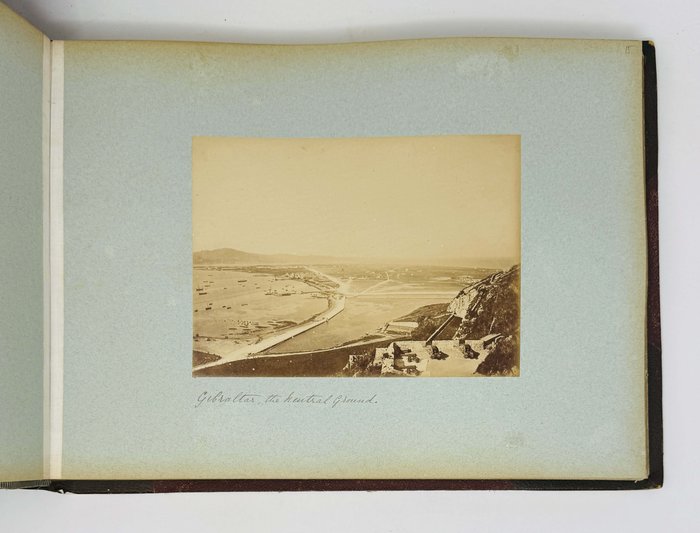
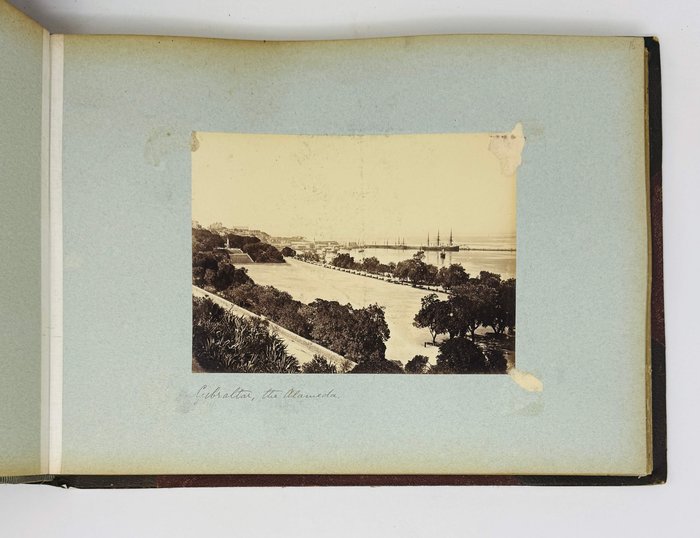
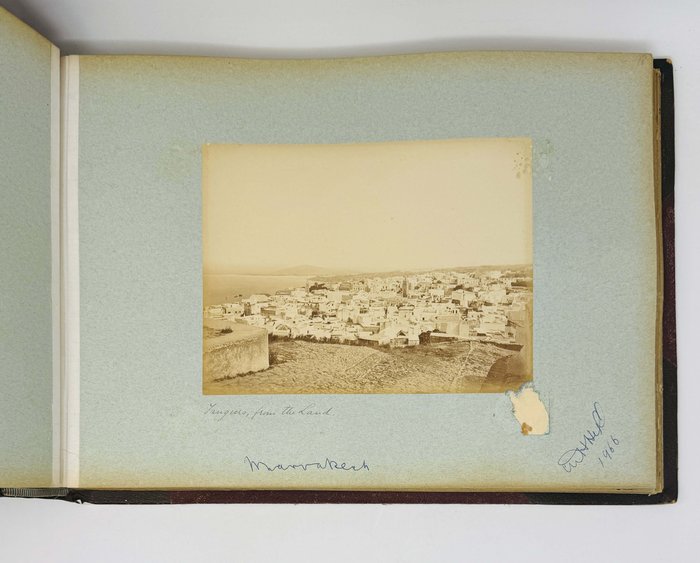
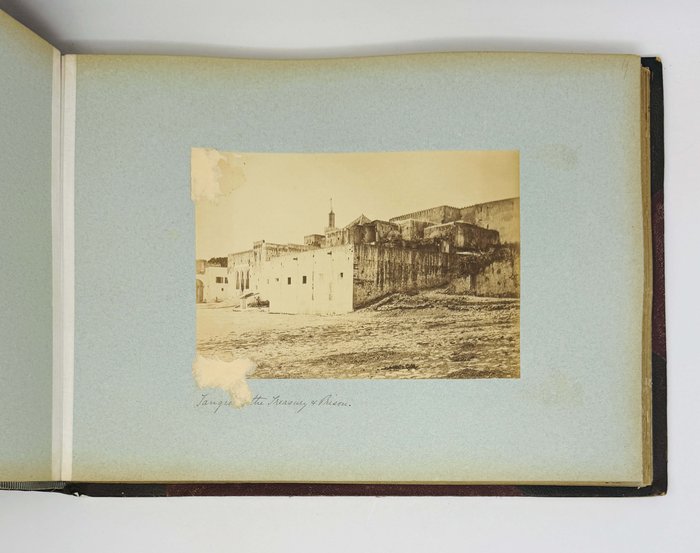
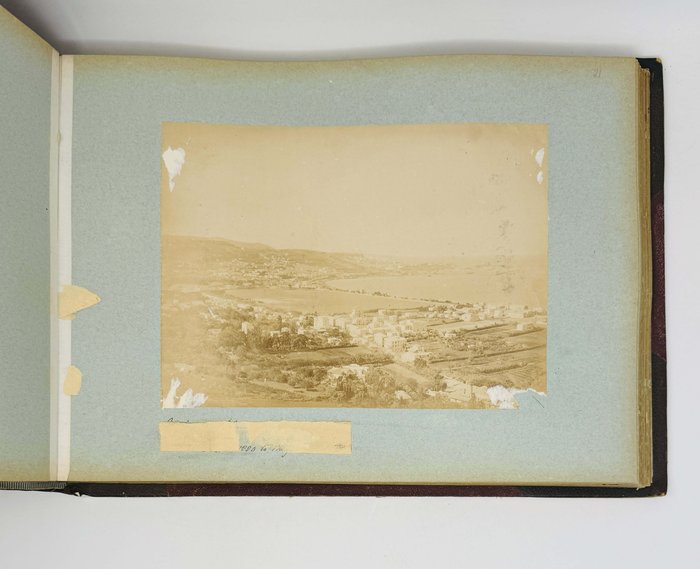
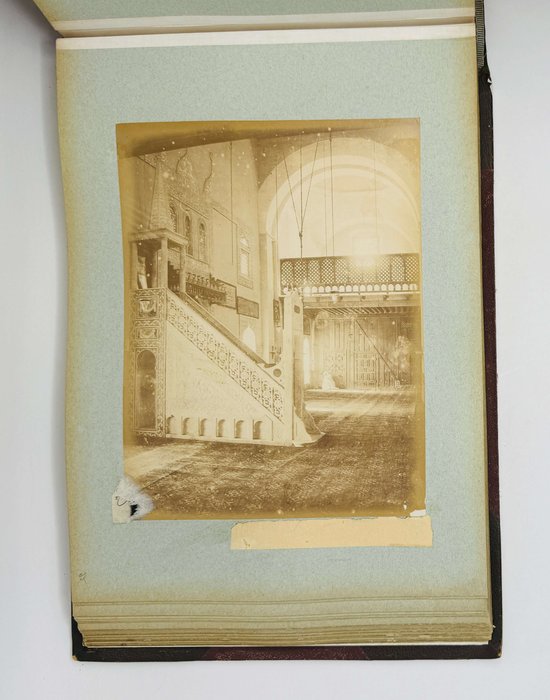
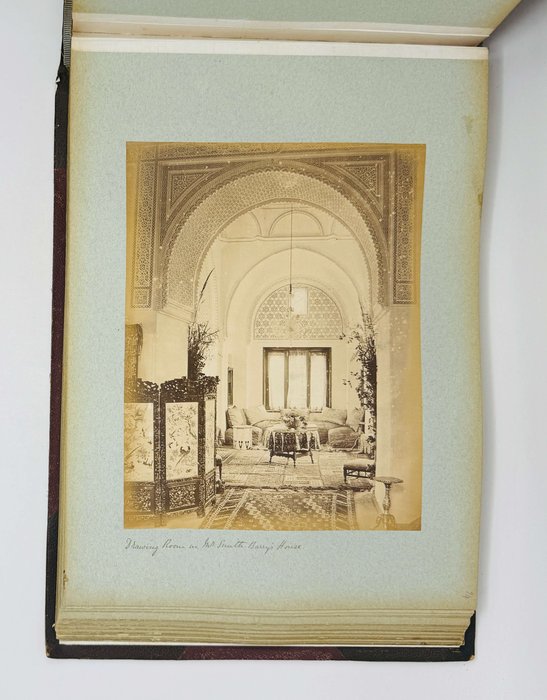
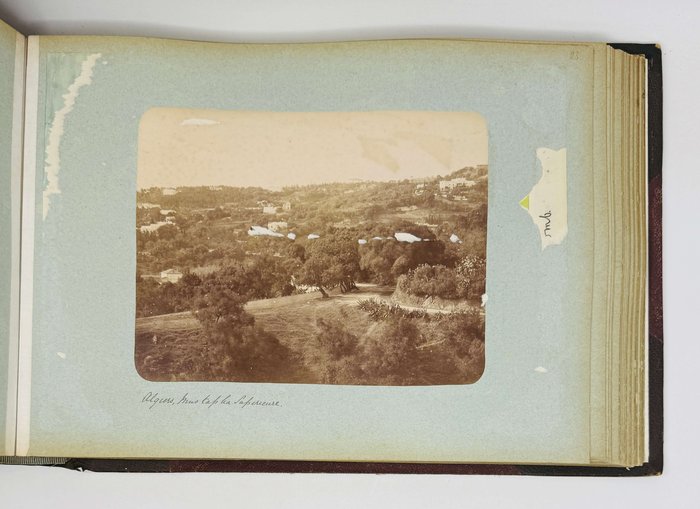
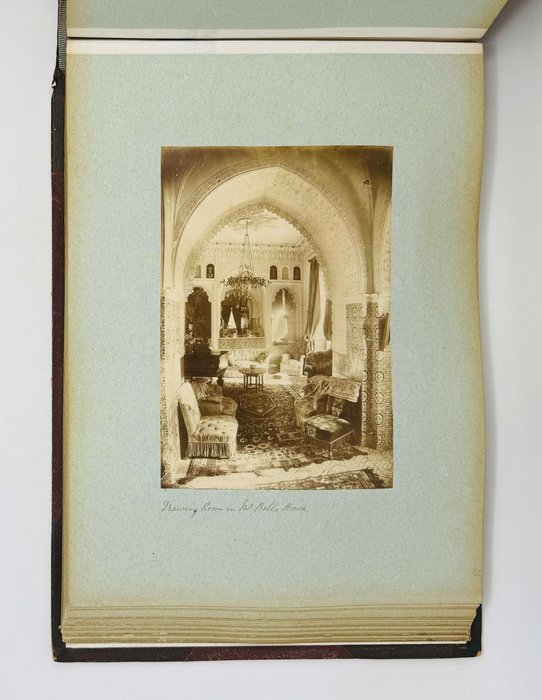
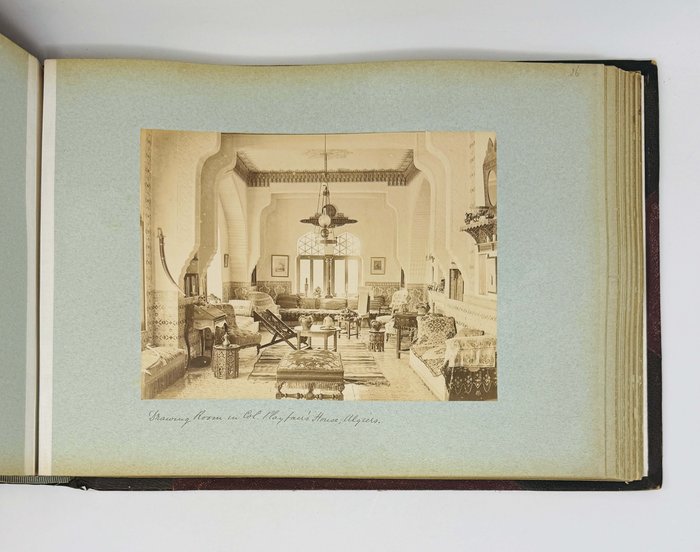
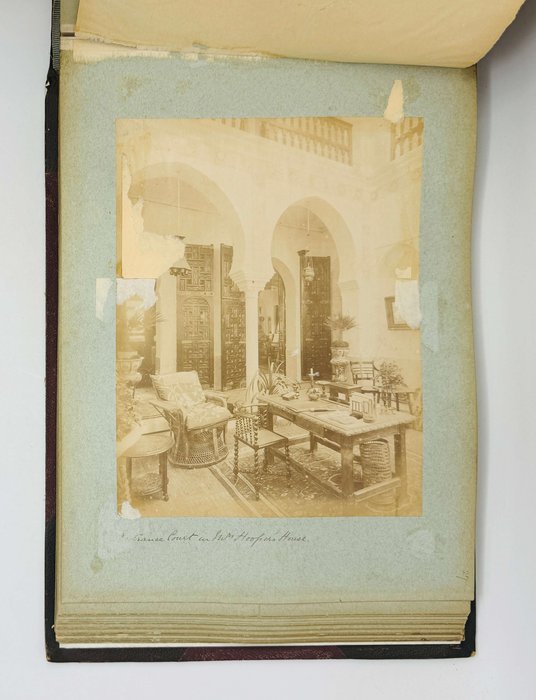
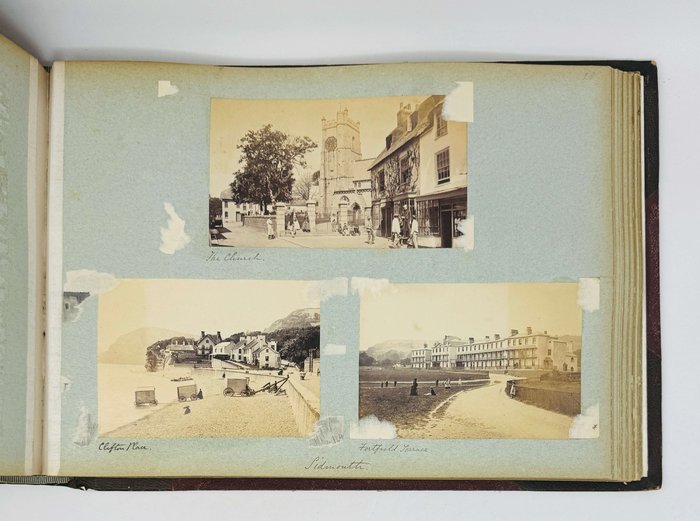
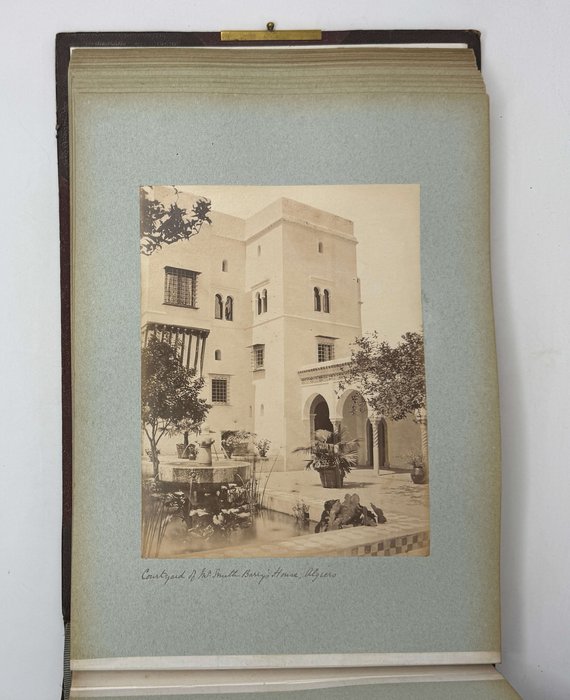
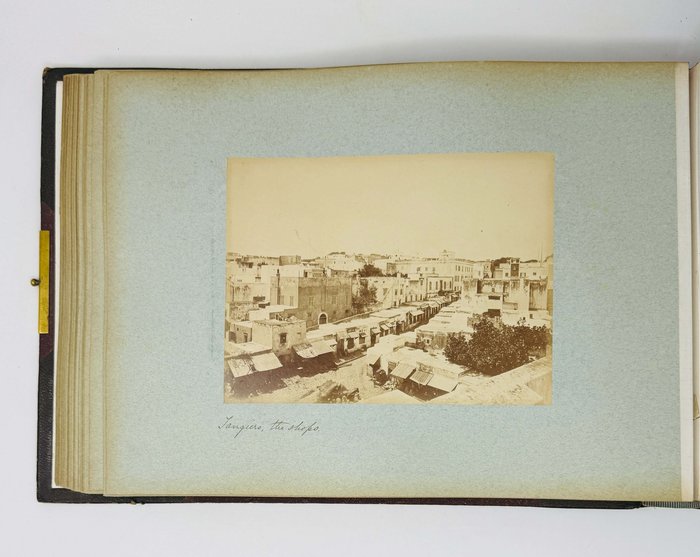
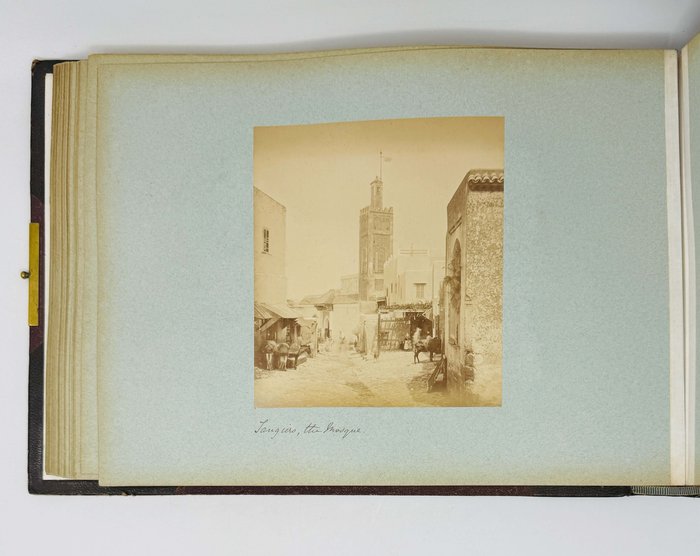

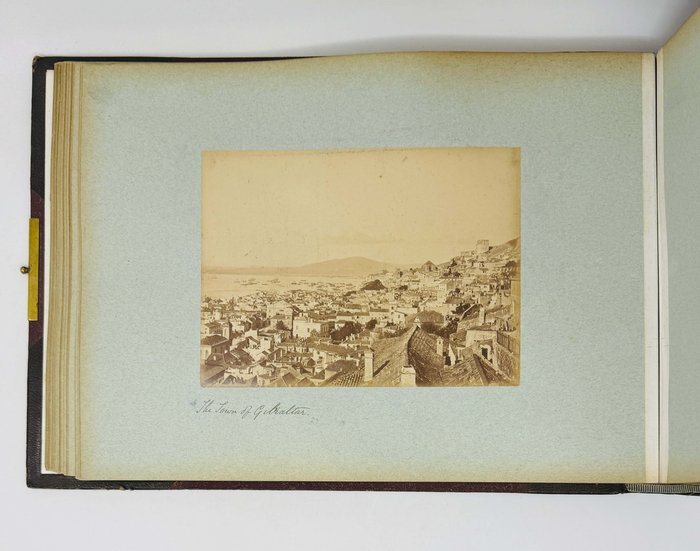
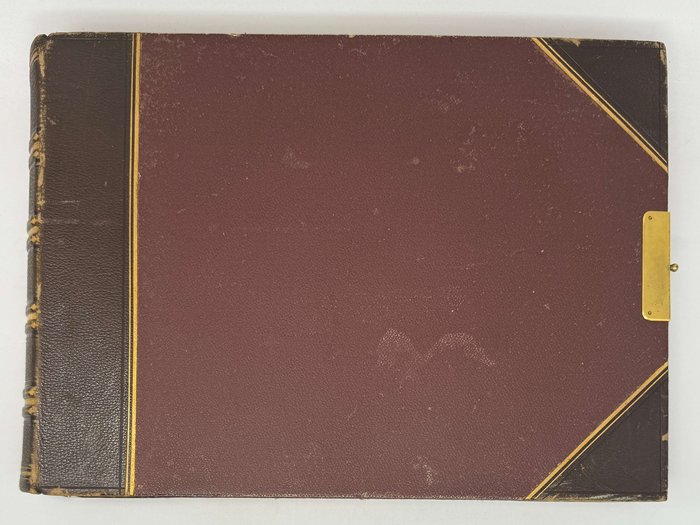
#PF24
Ca. 1880-1882
Oblong Elephant Folio (ca. 41.5 x 30 cm or 16 ¼ x 11 ¾ in). 42 cardstock leaves (one blank). 91 albumen photographs from ca. 27 x 21.5 cm (10 ½ x 8 ¼ in) to 13.5 x 9.5 cm (5 ¼ x 3 ¾ in). 88 images with period English ink captions on mounts. Period brown quarter Morocco album with maroon cloth boards; spine with raised bands, gilt-tooled decorative borders, and gilt-lettered title; boards with gilt-tooled borders and remnant of brass clasp; moire endpapers; all edges gilt. Boards and spine mildly rubbed on extremities; mounts slightly waved, 34 mounts with residue of mid-20th century images mounted on top of albumen photographs and subsequently removed; 35 images are affected (mostly in corners, ca. 11 in centre of image), A few photos mildly faded, but overall a very good album.
An interesting collection of 91 studio albumen photographs from a series of trips of an Englishman between 1880 and 1882, showing Algeria, Gibraltar, and Morocco (Tangiers) as well as France, England, and Portugal.
Over 30 photographs show Algeria. They include city and street views of Algiers; a view of Oran; a view of Tizi Ouzou; and several photographs of Fort National (now Larbaâ Nath Irathen), a town on the northern coast of Algeria. In 1857, the town was the site of a battle during the French pacification of Algeria (1830-1875). Photographs of Fort National include the road to the town, views of the town and its environs, a market, and scenes from a Kabyle village. Additionally, several photographs of Algiers show the homes of named people, including the courtyard and drawing room of “Mr. Smith Barry” (likely Arthur Smith-Barry (1843-1925), an Anglo-Irish politician and the 1st Baron Barrymore), the drawing room of “Col. Playfair” (likely Lieutenant-Colonel Lambert Playfair (1828-1899), Consul-General of Algeria between 1867 and 1896), the front door and drawing room of “Mr. Bell” (possibly John Bell (1818-1888), an English industrialist who died in Algiers), the drawing room of “Mr. Seymour,” and the house and entrance court of “Mrs. Hooper.”
Seven photographs show Gibraltar, including a panorama of the city, views “from the Spanish lines” and of “the neutral ground,” the signal station, Europa Point, and the Alameda Gardens. Six photographs show Tangiers, including views of the city, the Grand Mosque of Tangiers, the Kasbah Palace, a street with shops, and the market. Two photographs also show the French ironclad Colbert (1875), flagship of the French Mediterranean squadron and notable for shelling Sfax in 1881 during the French conquest of Tunisia.
The rest of the photographs were collected during the compiler’s trips around Europe. Views of France show Nîmes (Maison Carrée, Porte Auguste, the Nîmes esplanade, Temple of Diana, the Roman Baths), Le Havre (city view, the Grand Quay, the Hôtel de ville du Havre (destroyed during WWII), Bassin du Commerce), Lyon (Place Bellecour, Soane River), and Ajaccio. Views of England show Sidmouth (Sidmouth Parish Church, Clifton Place, Fortfield Terrace) York (York Minister, St. Mary’s Abbey, Micklegate Bar), Chester (Chester Cathedral, street views), Ilkley, Harrowgate, and Liverpool. Views of Portugal show Lisbon (Belem Tower, Our Lady of Grace Cathedral).
Overall, an interesting collection showing Algeria, Gibraltar, and Tangiers during the early 1880s.

